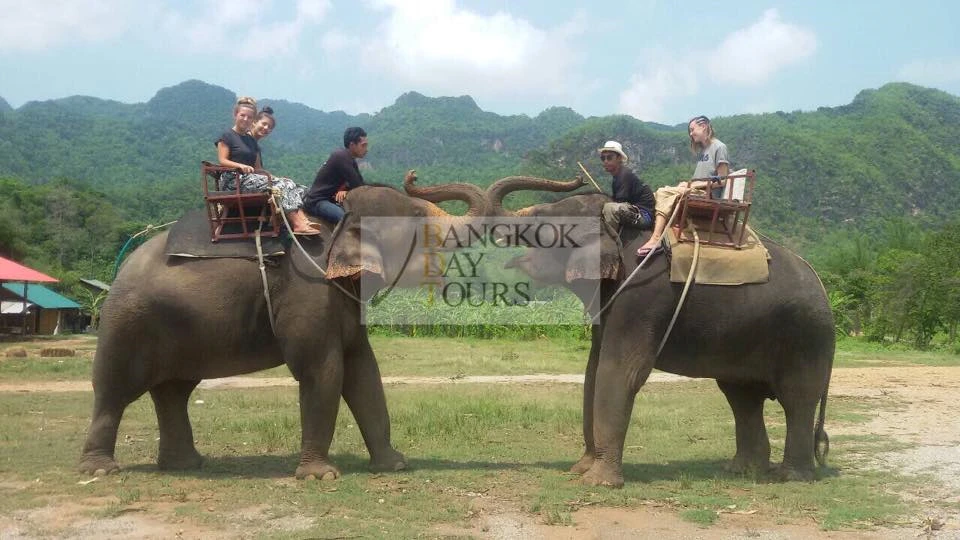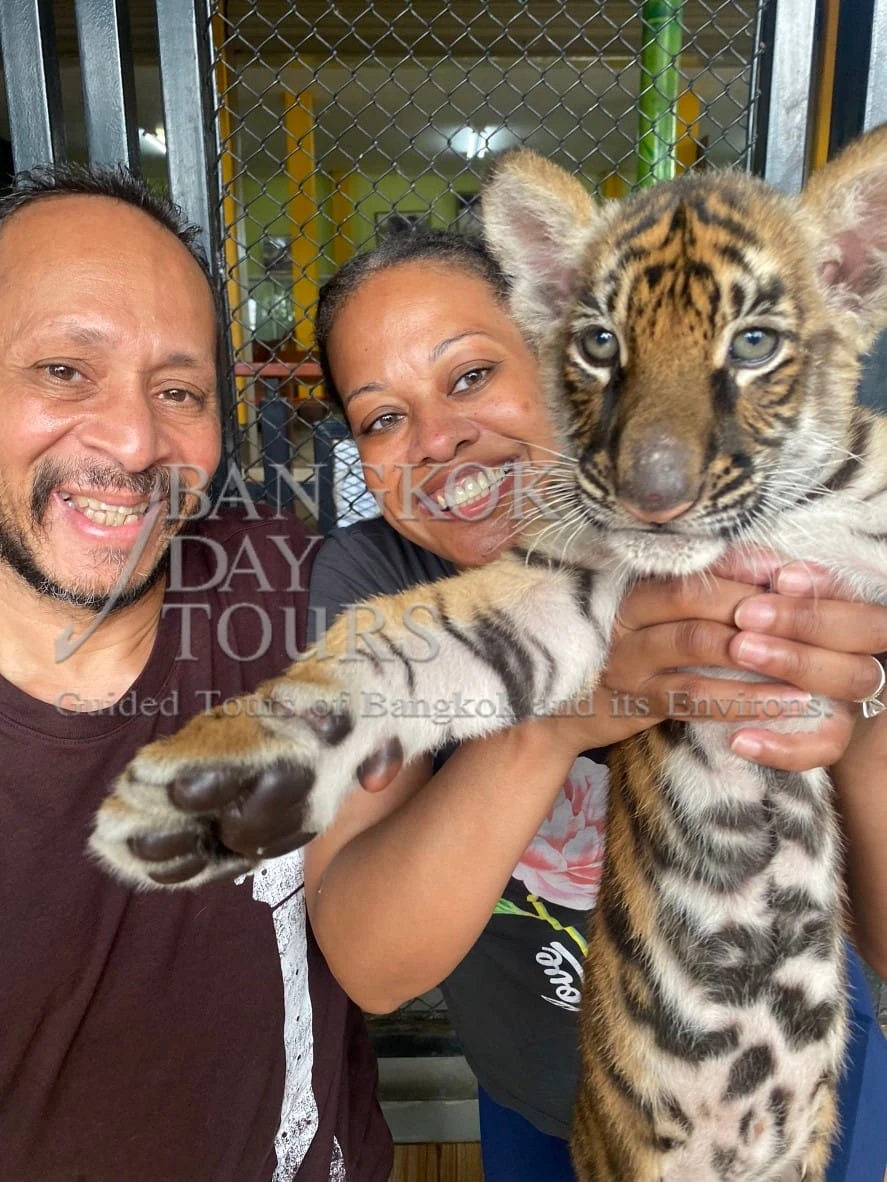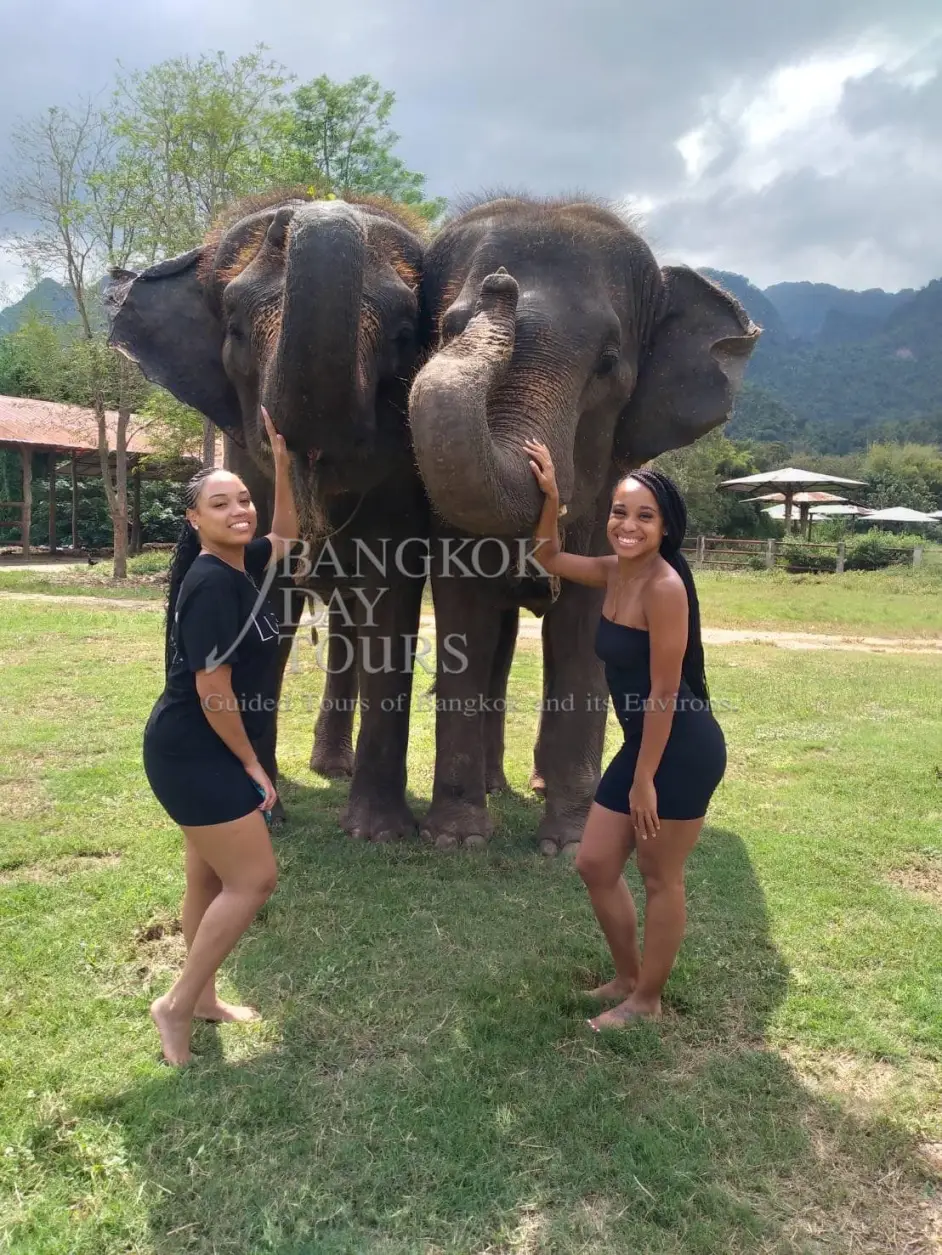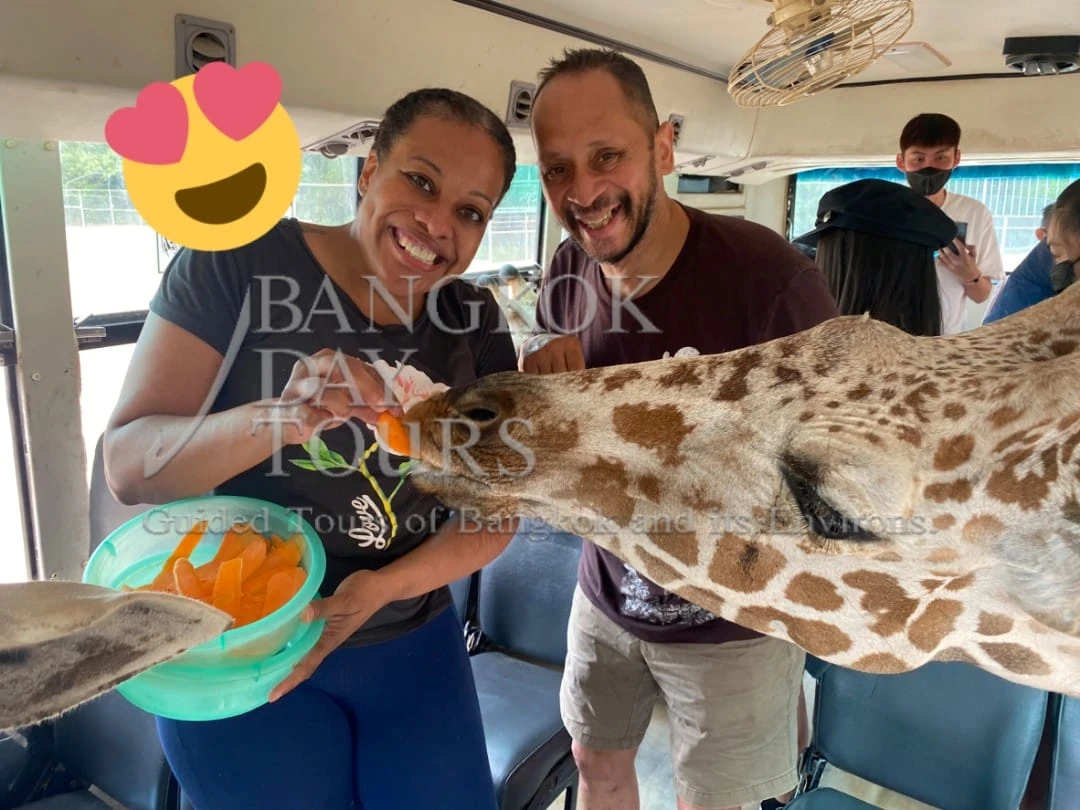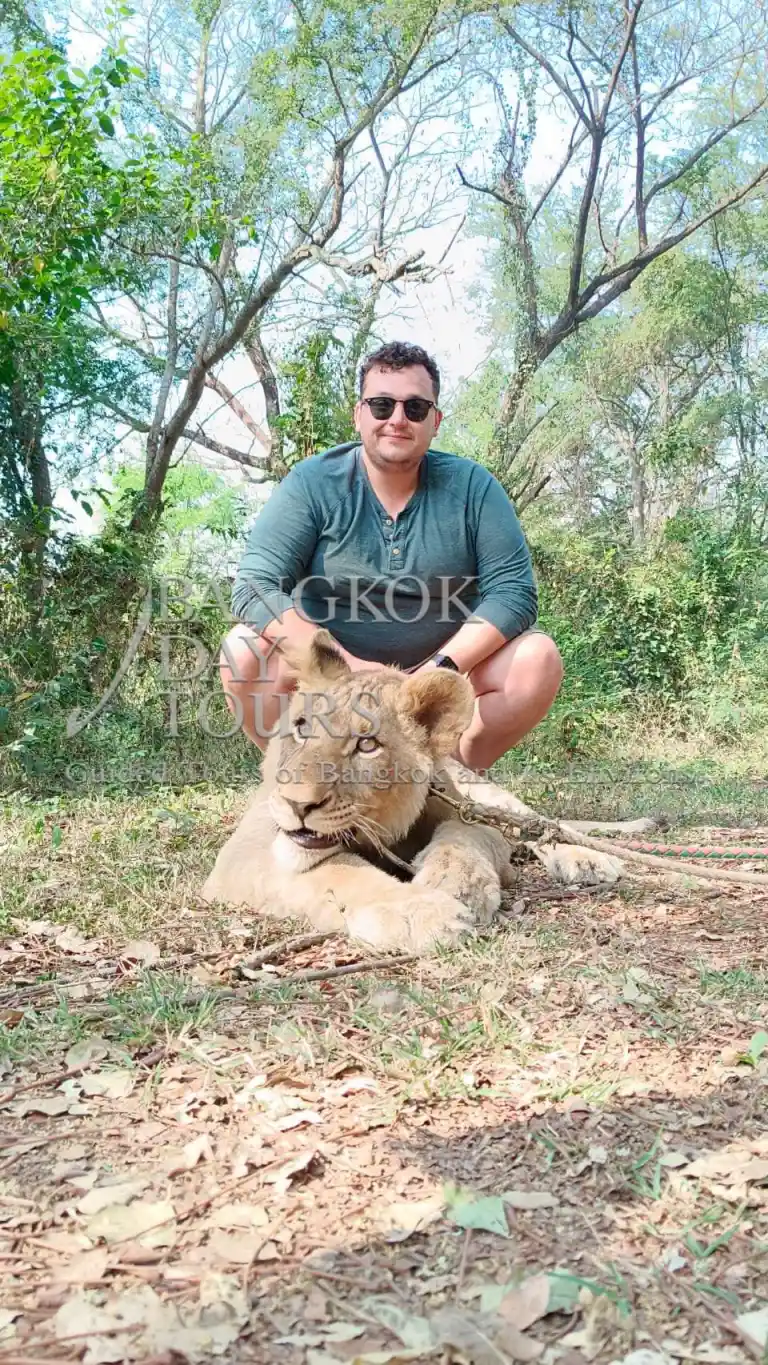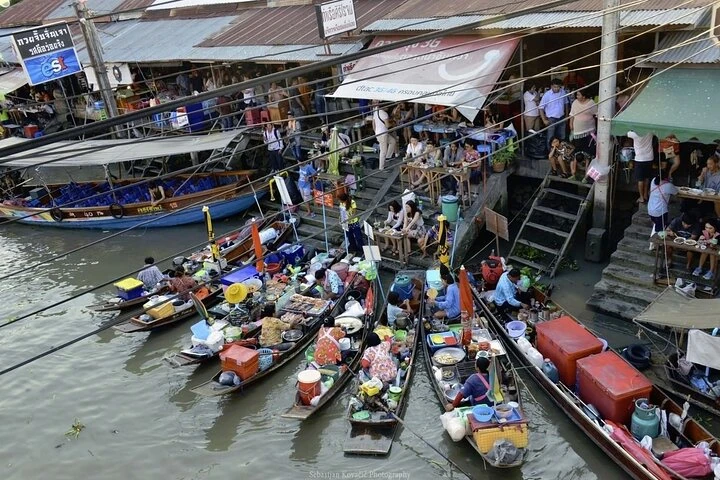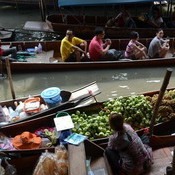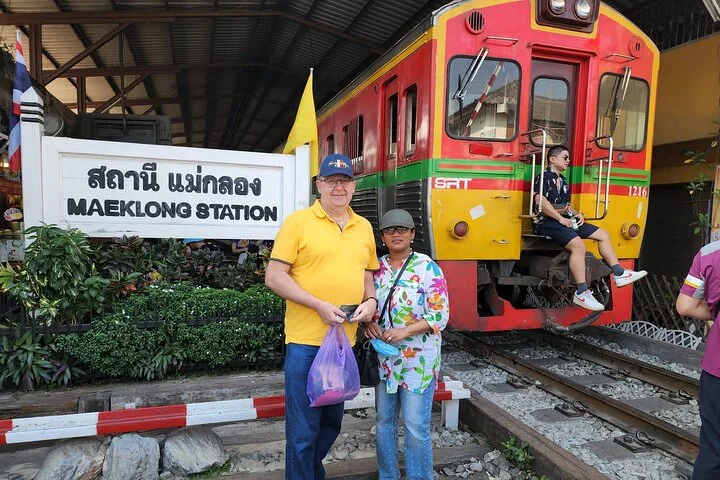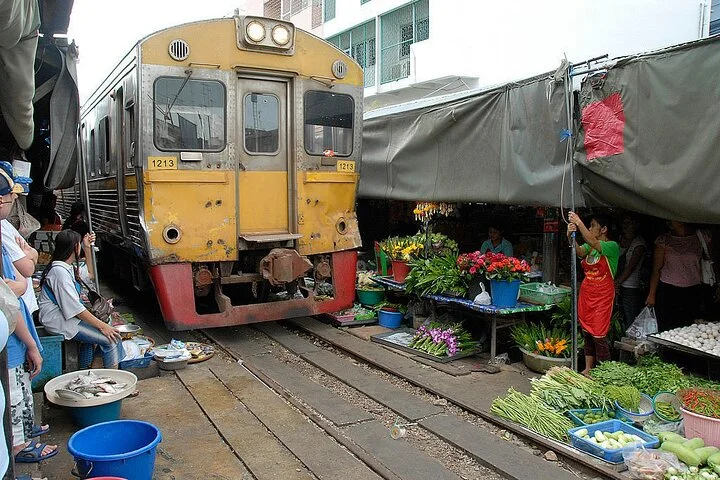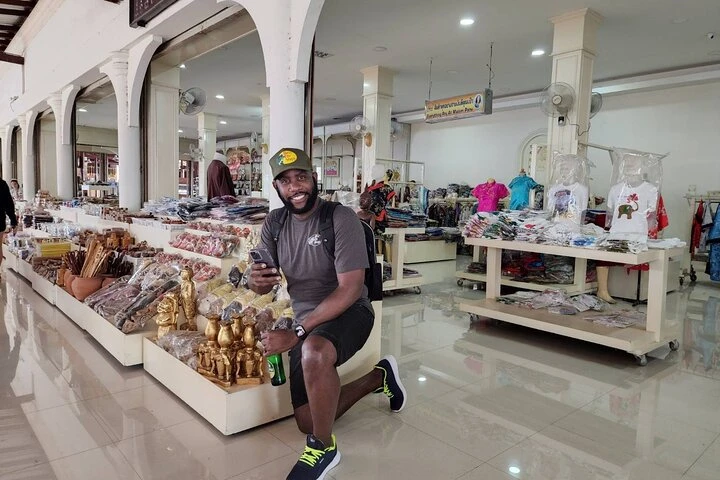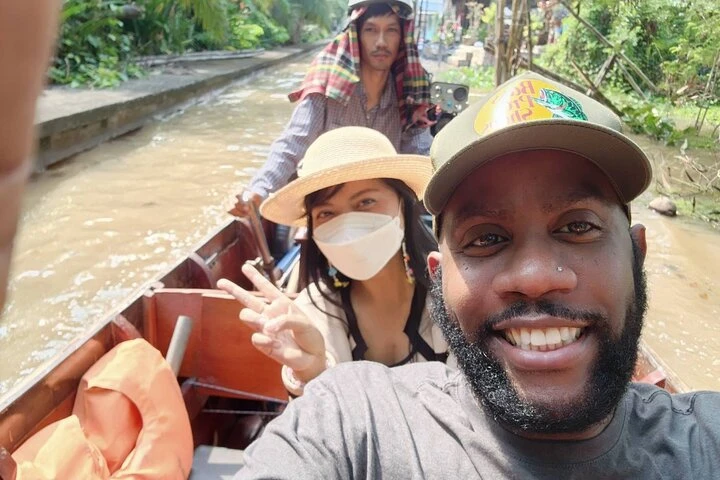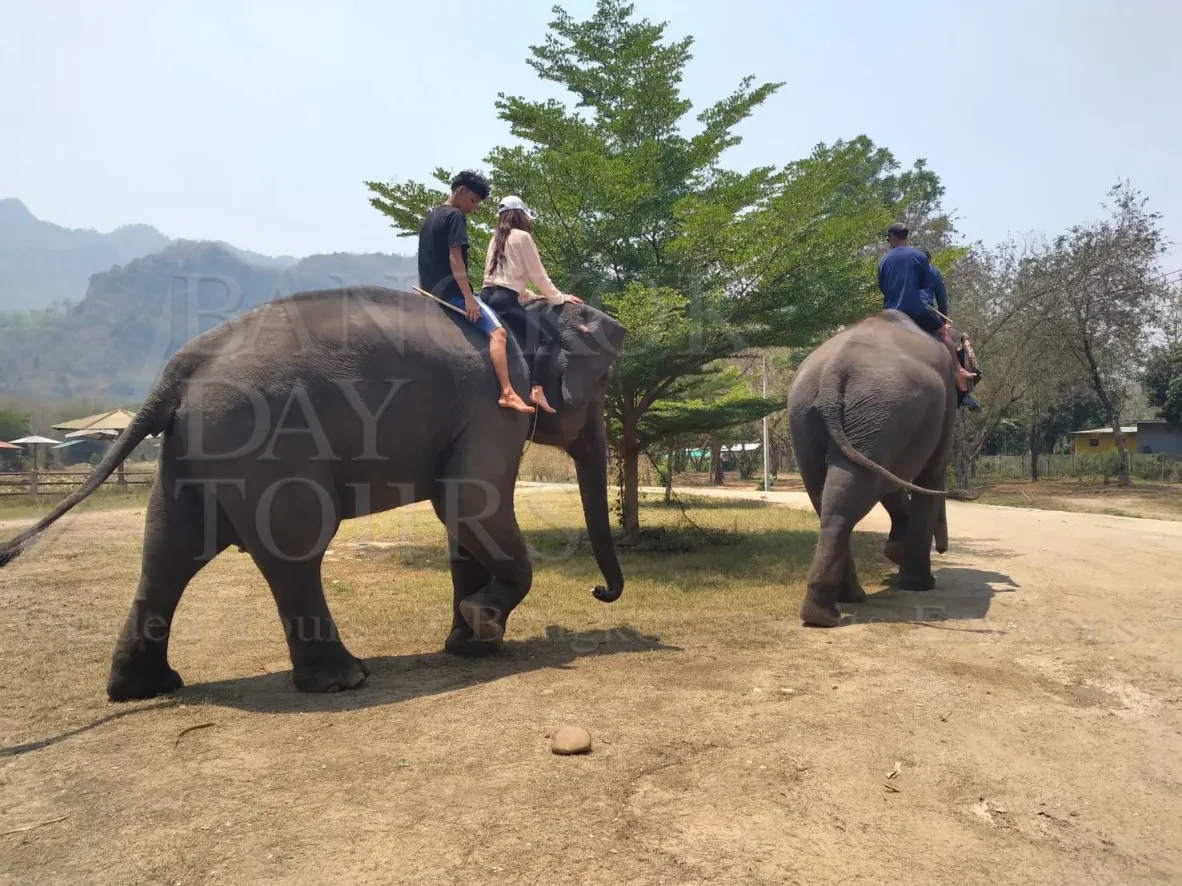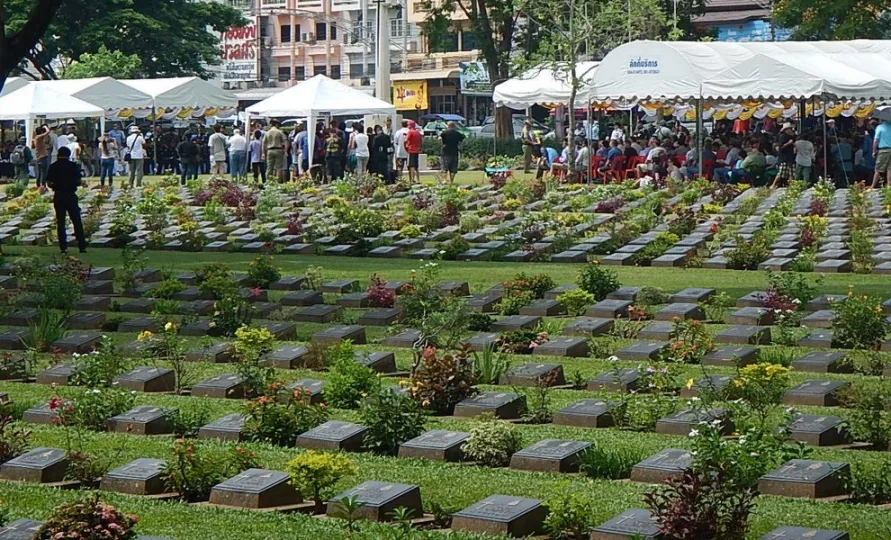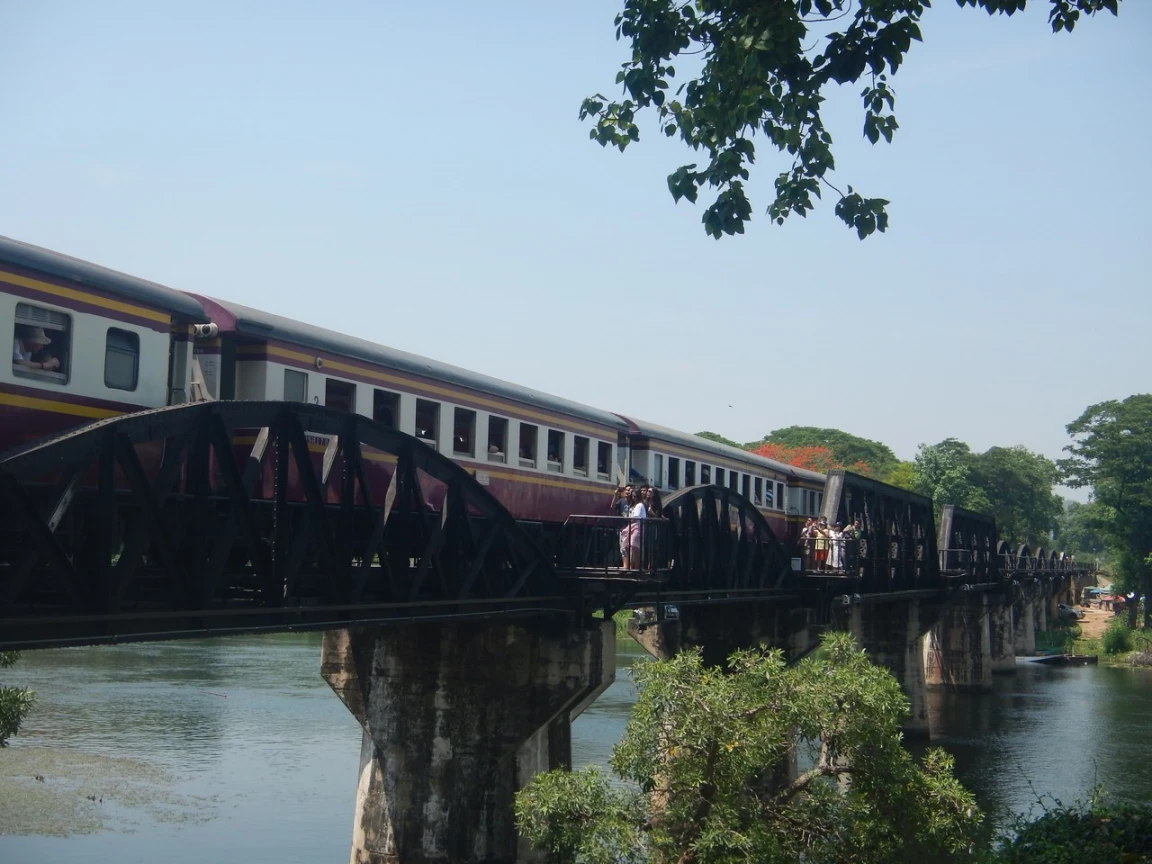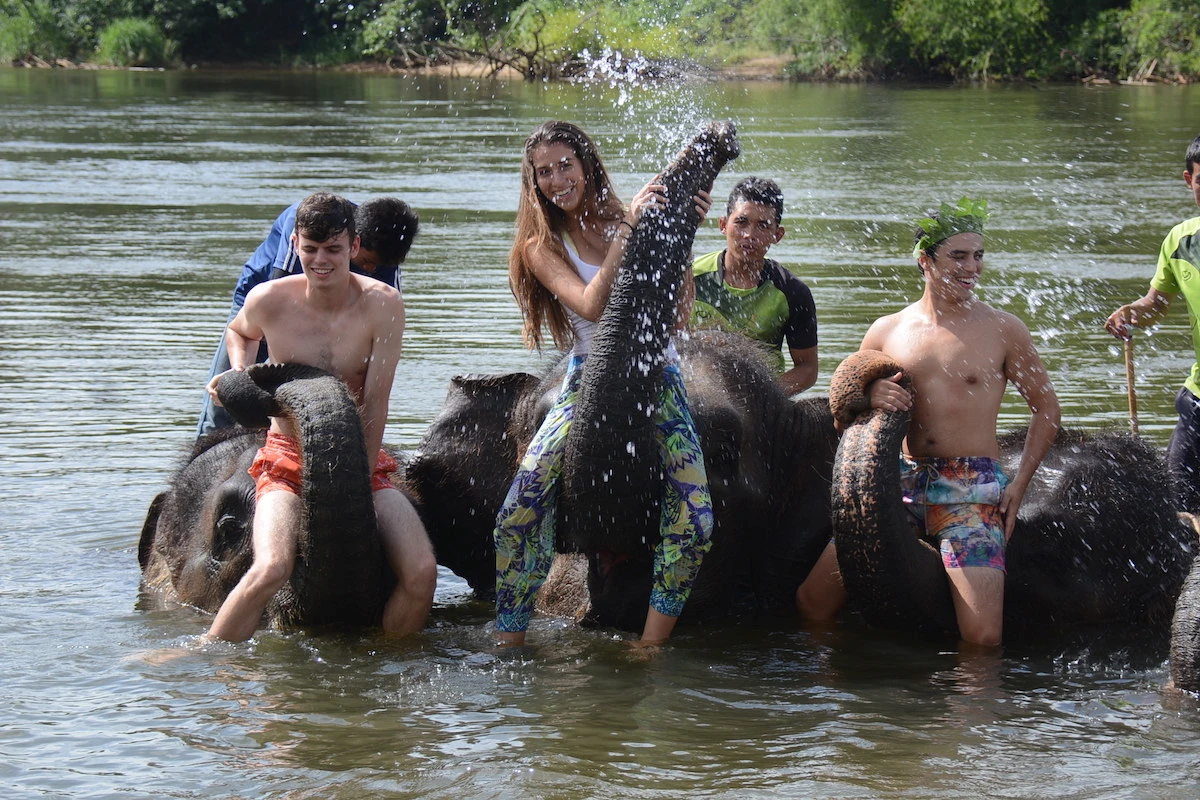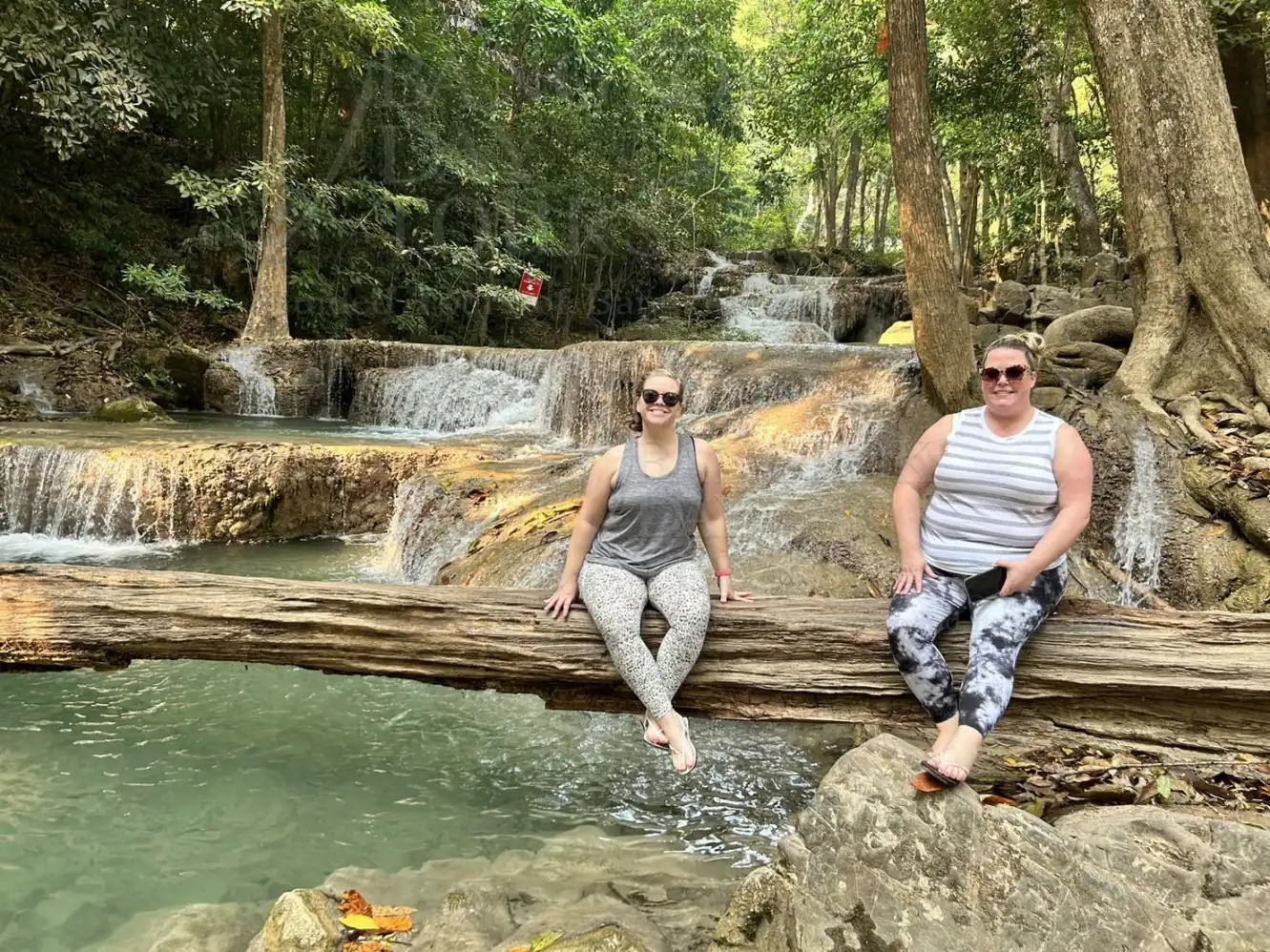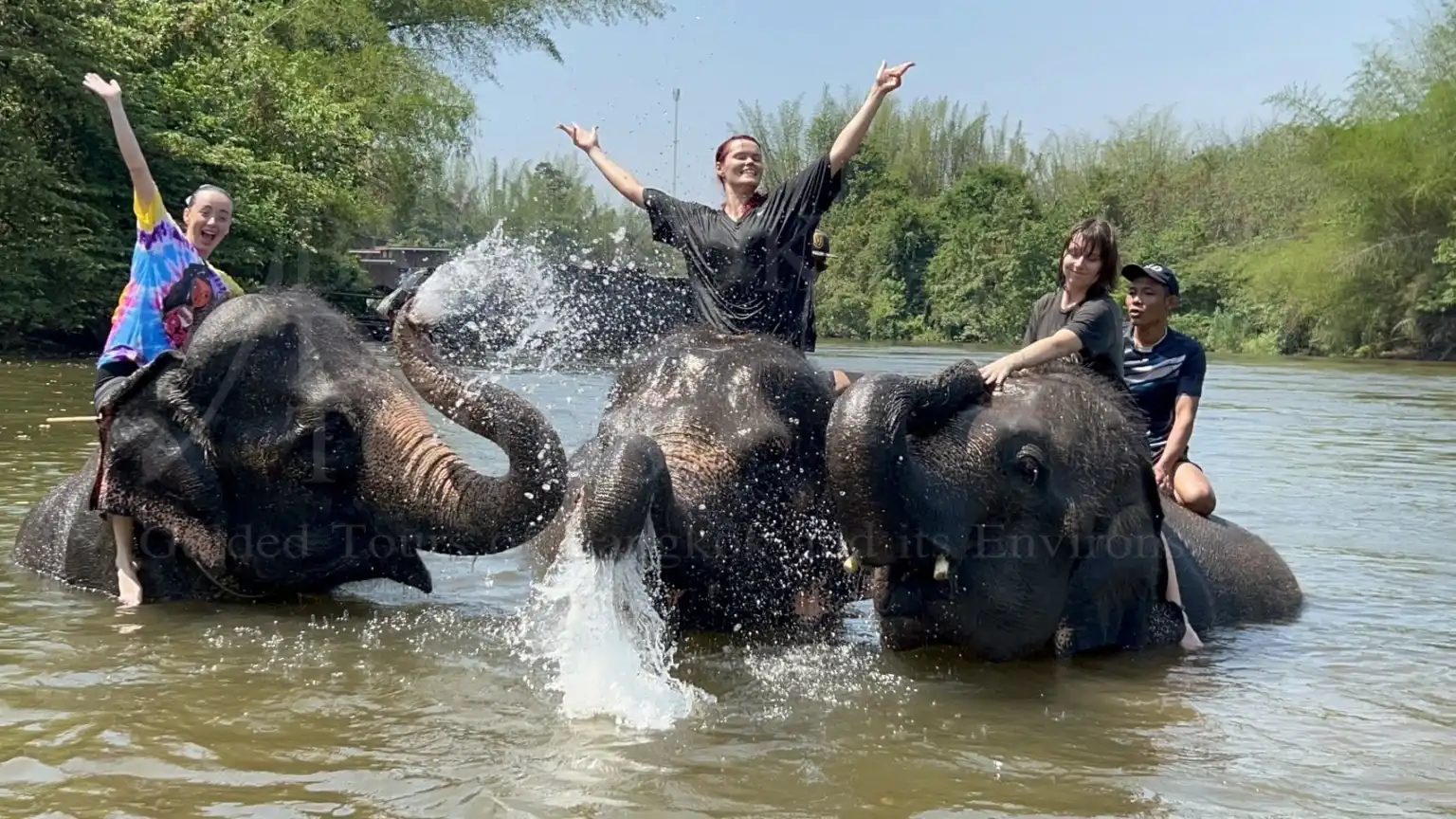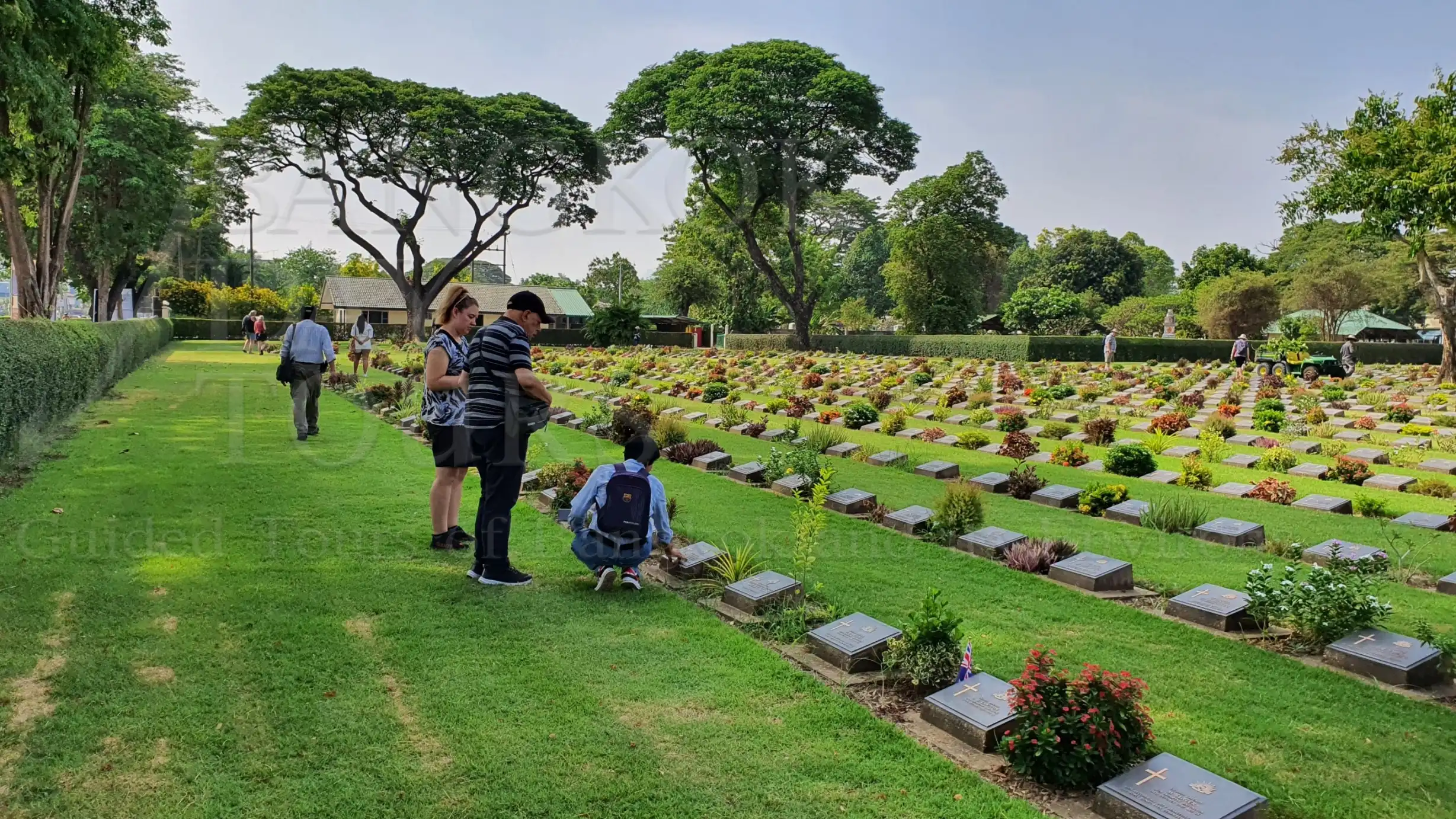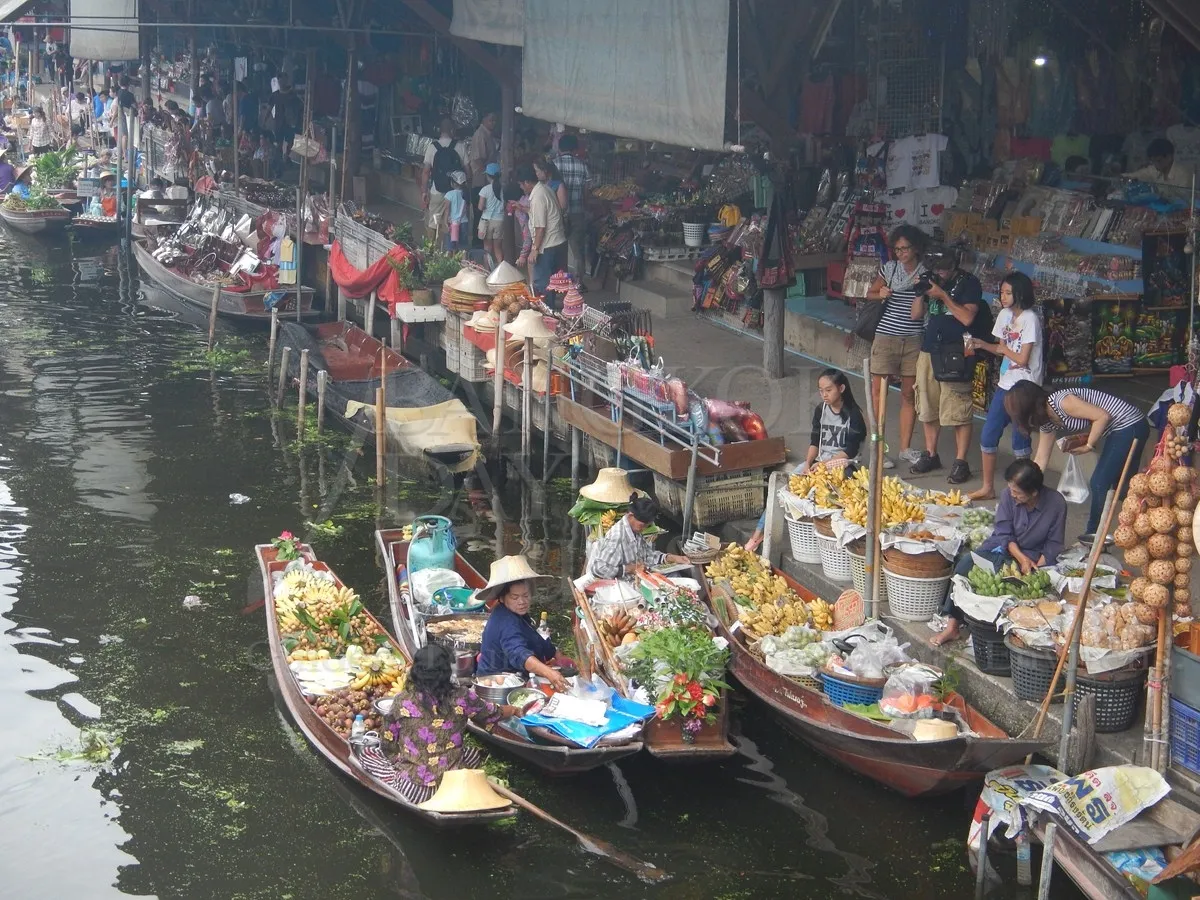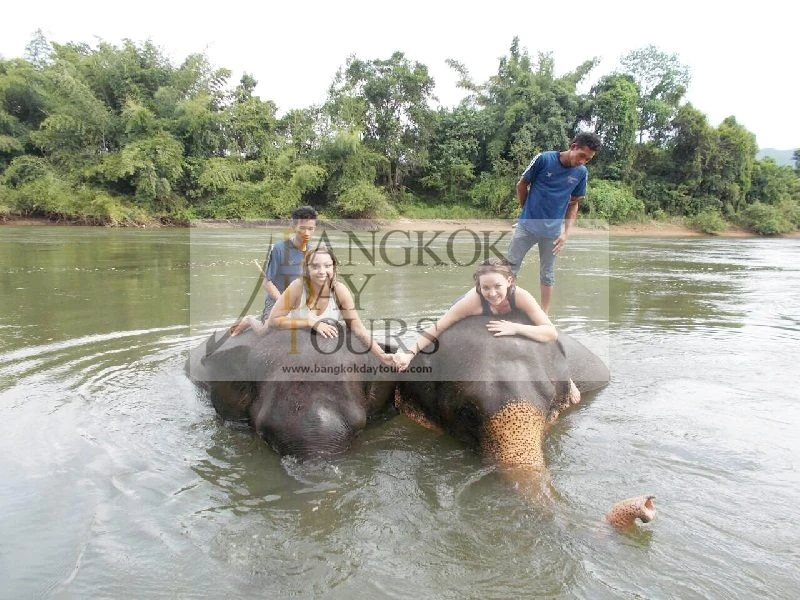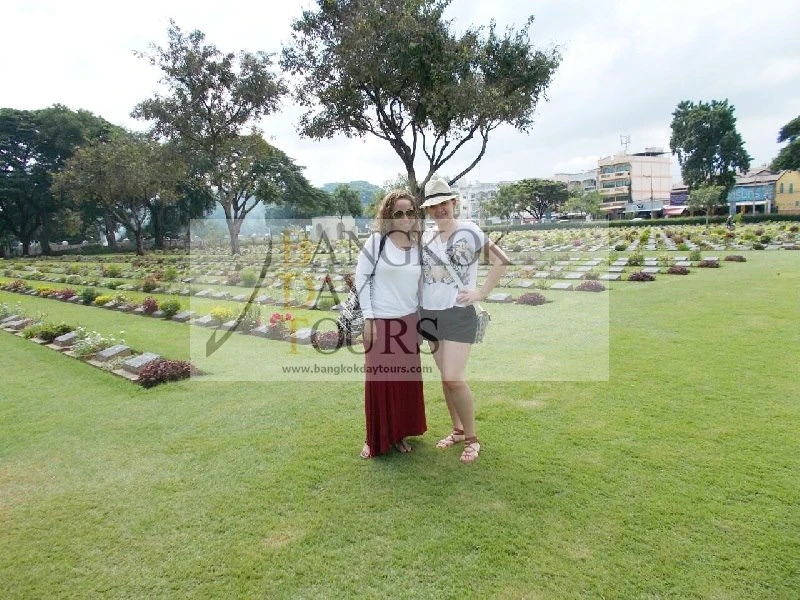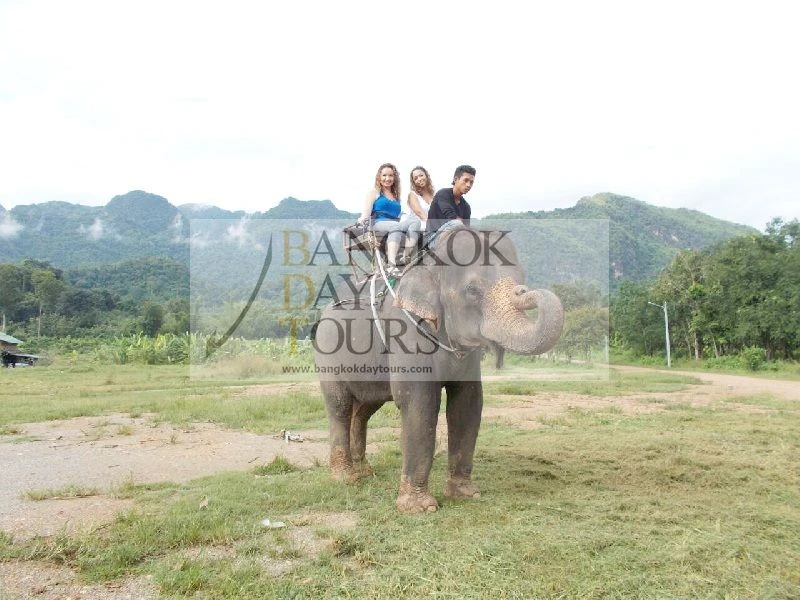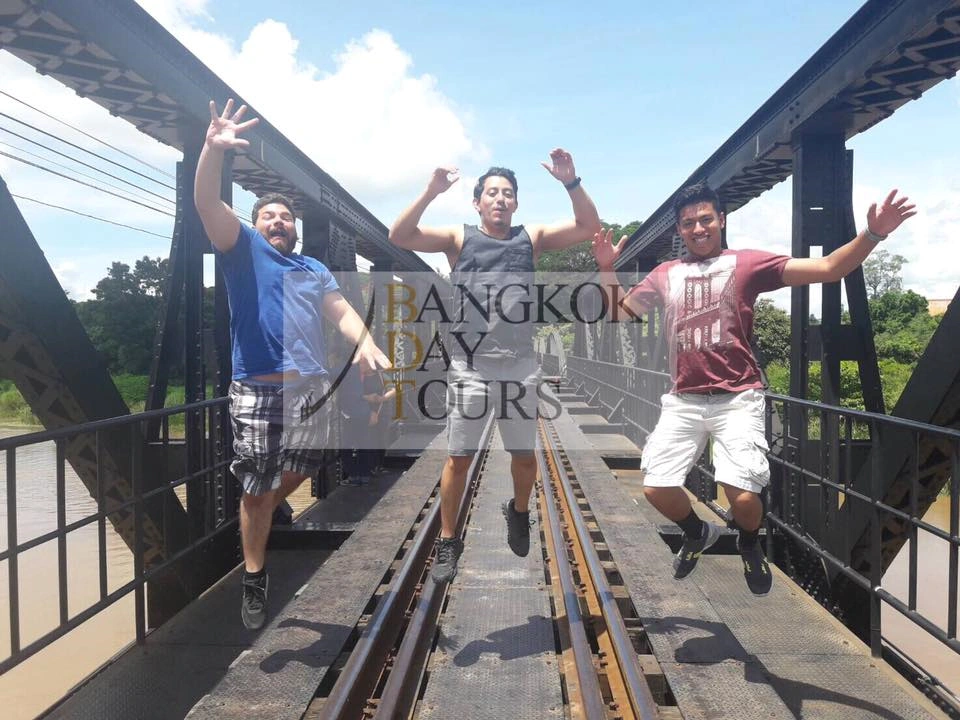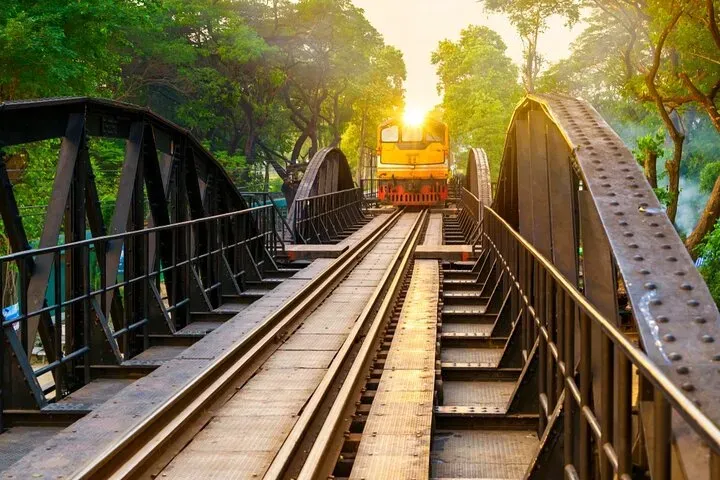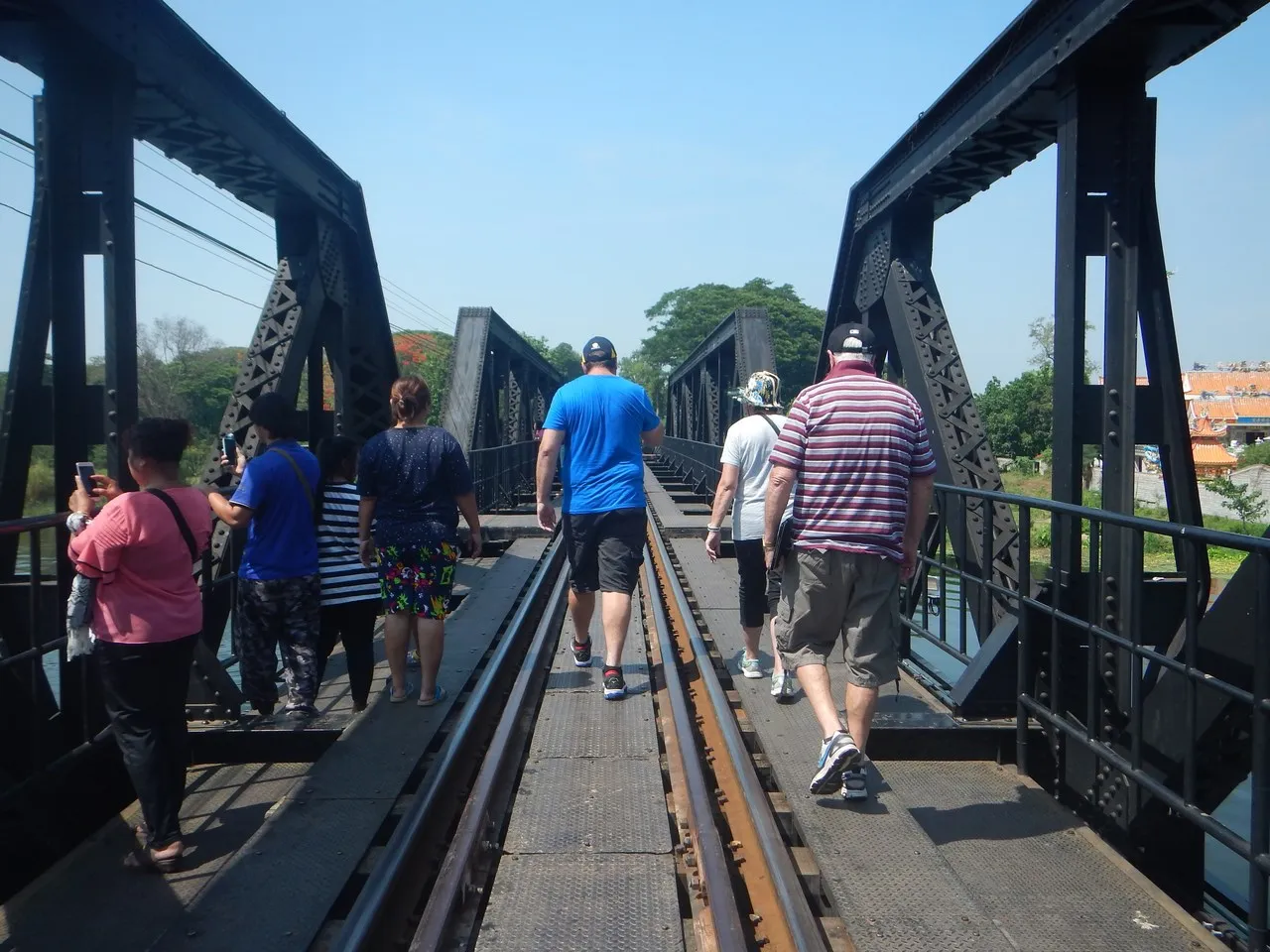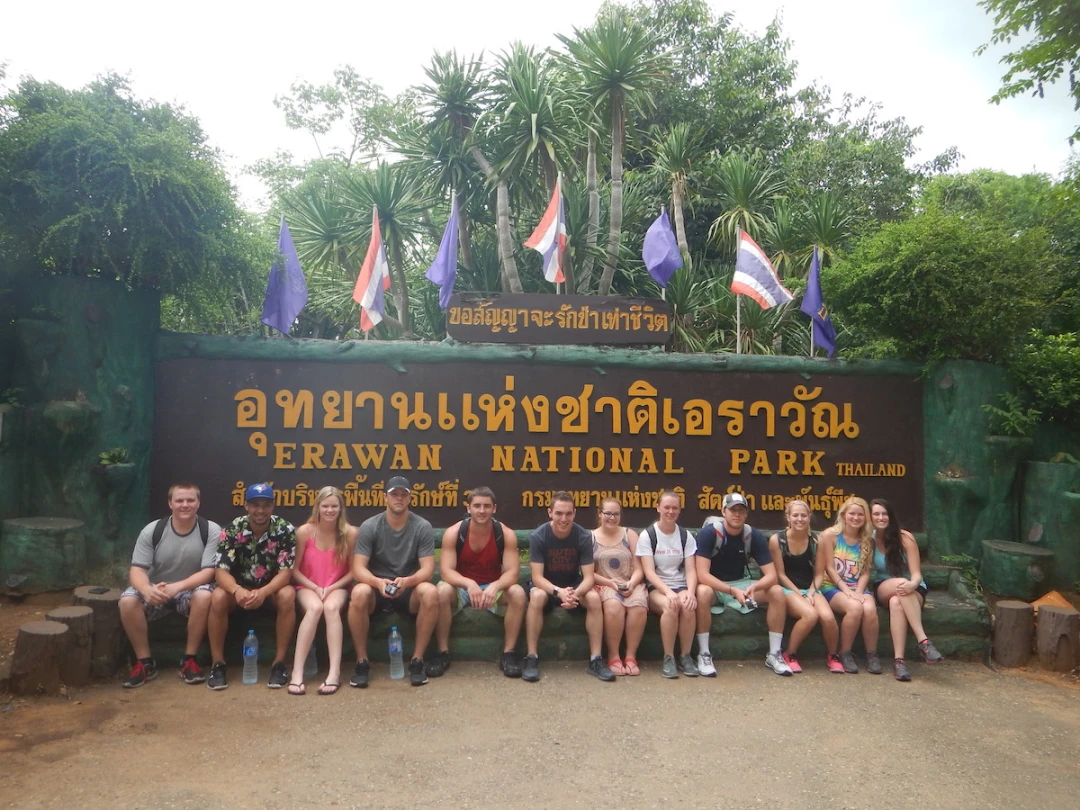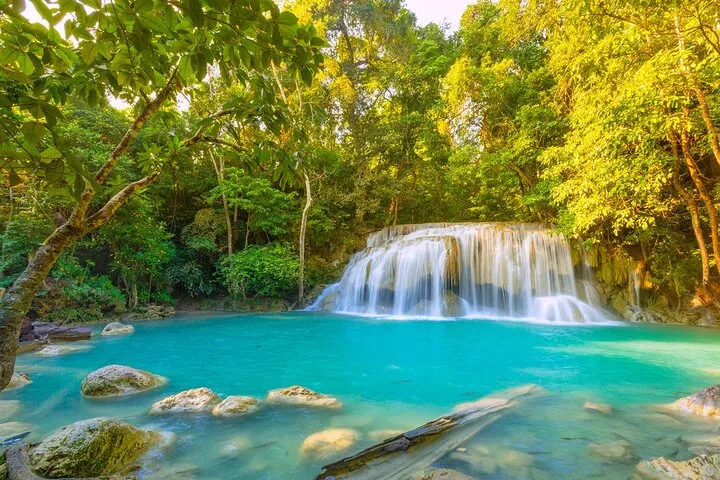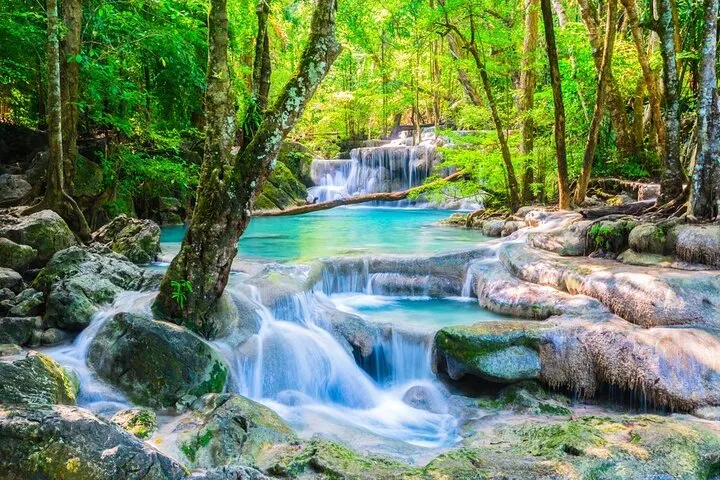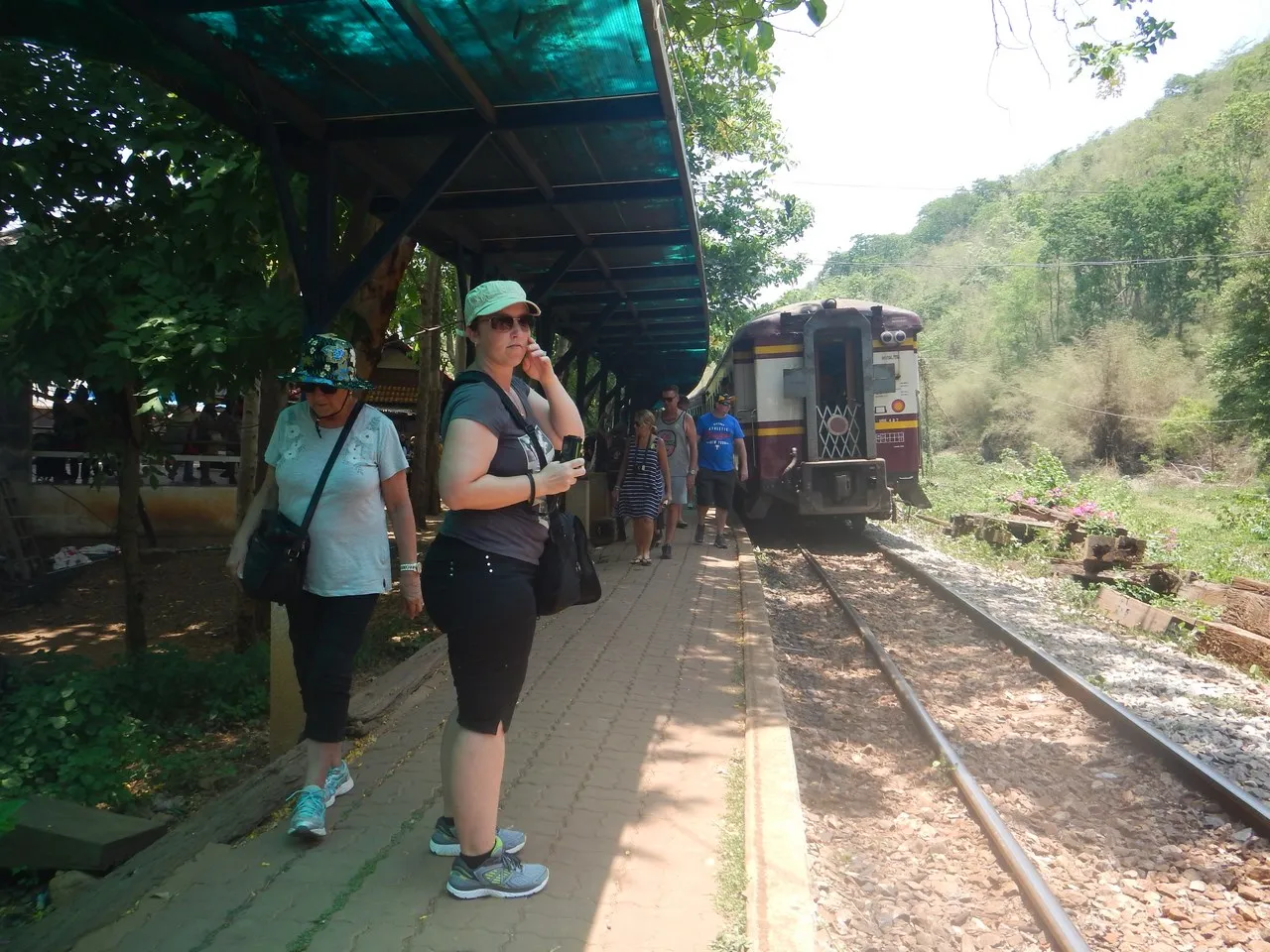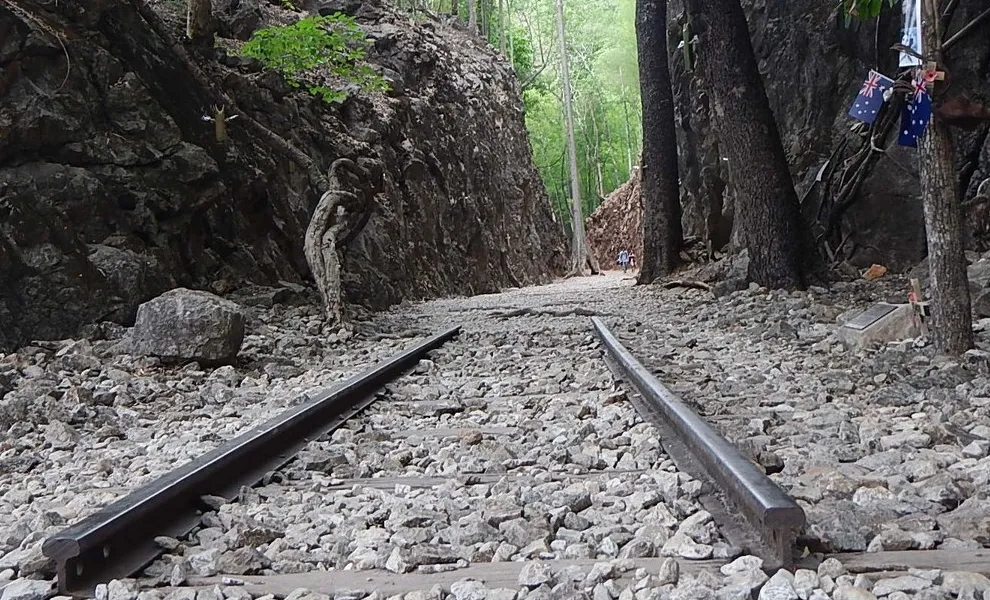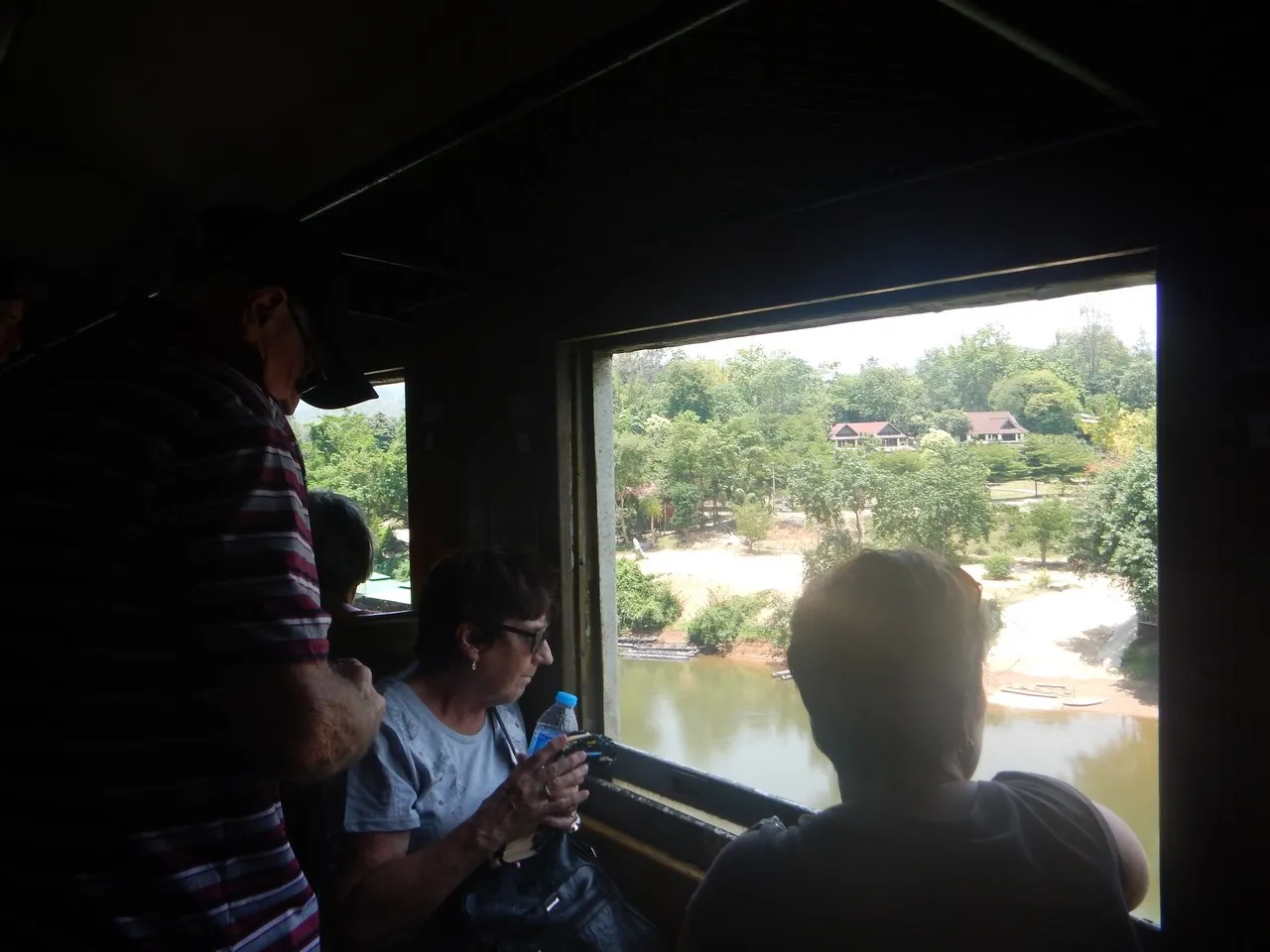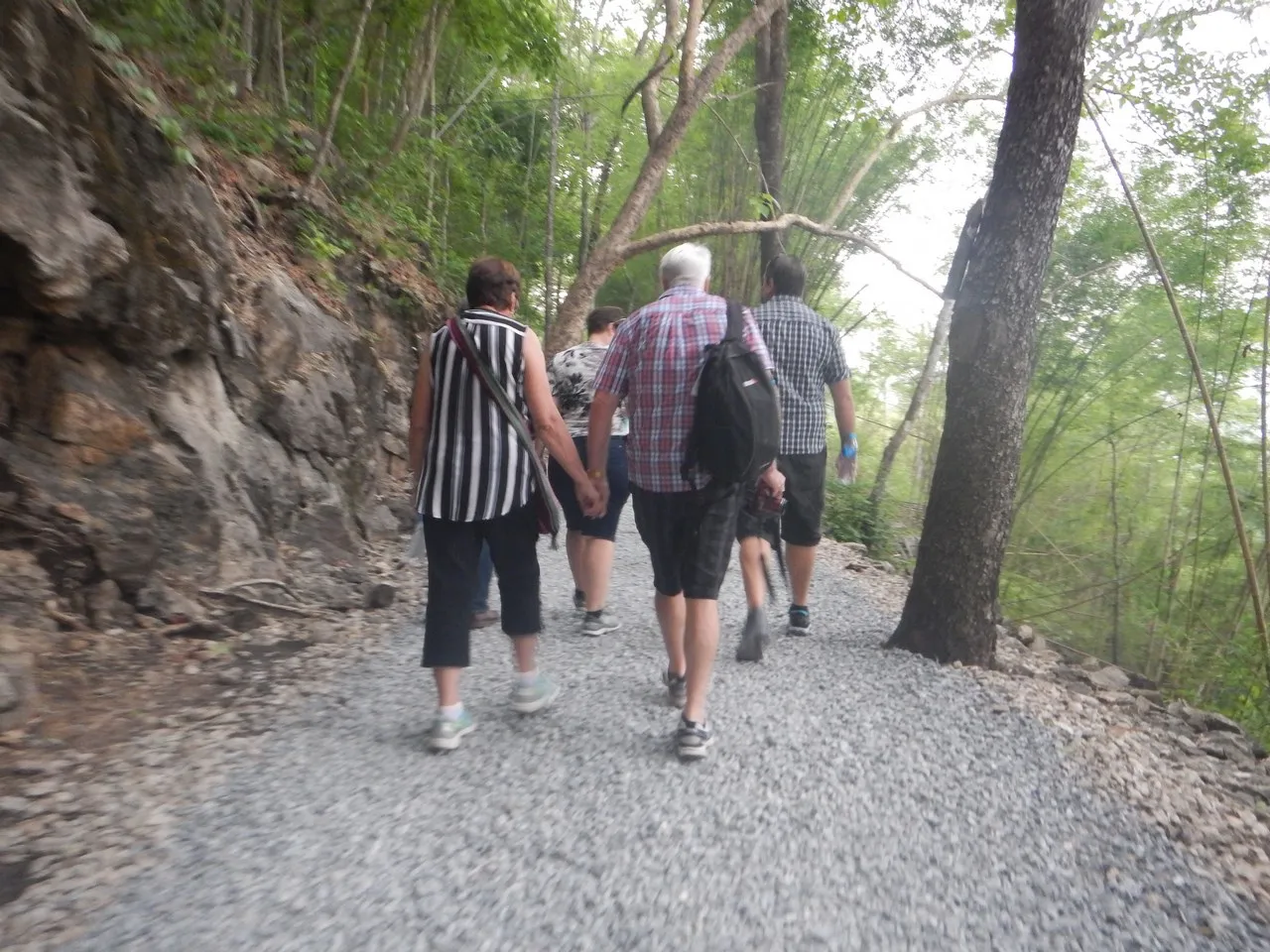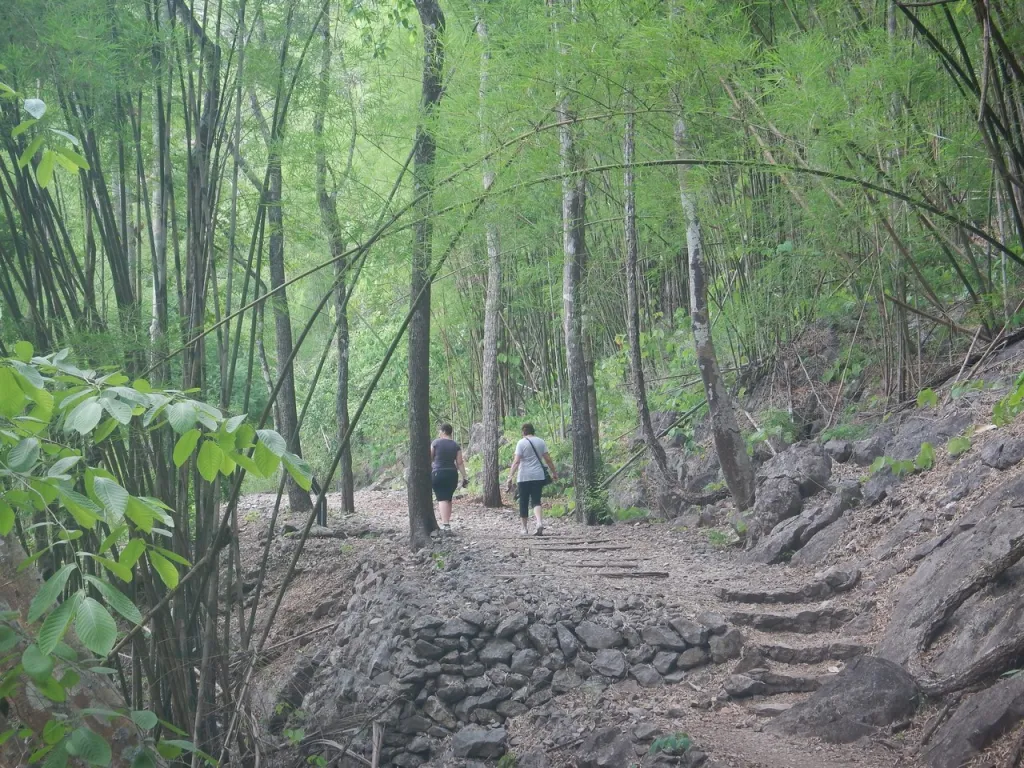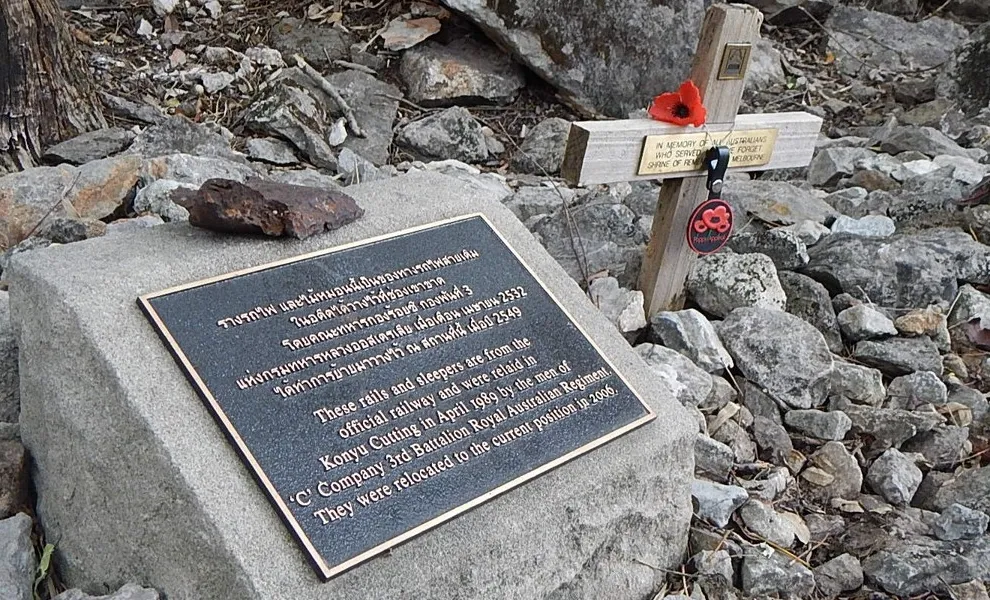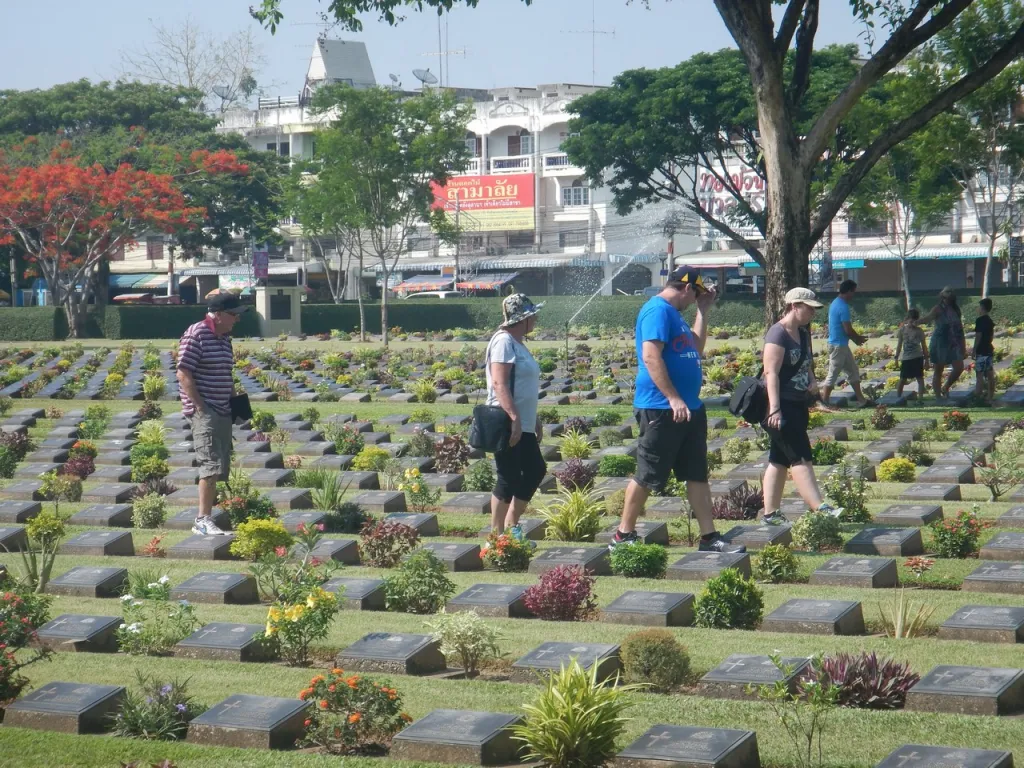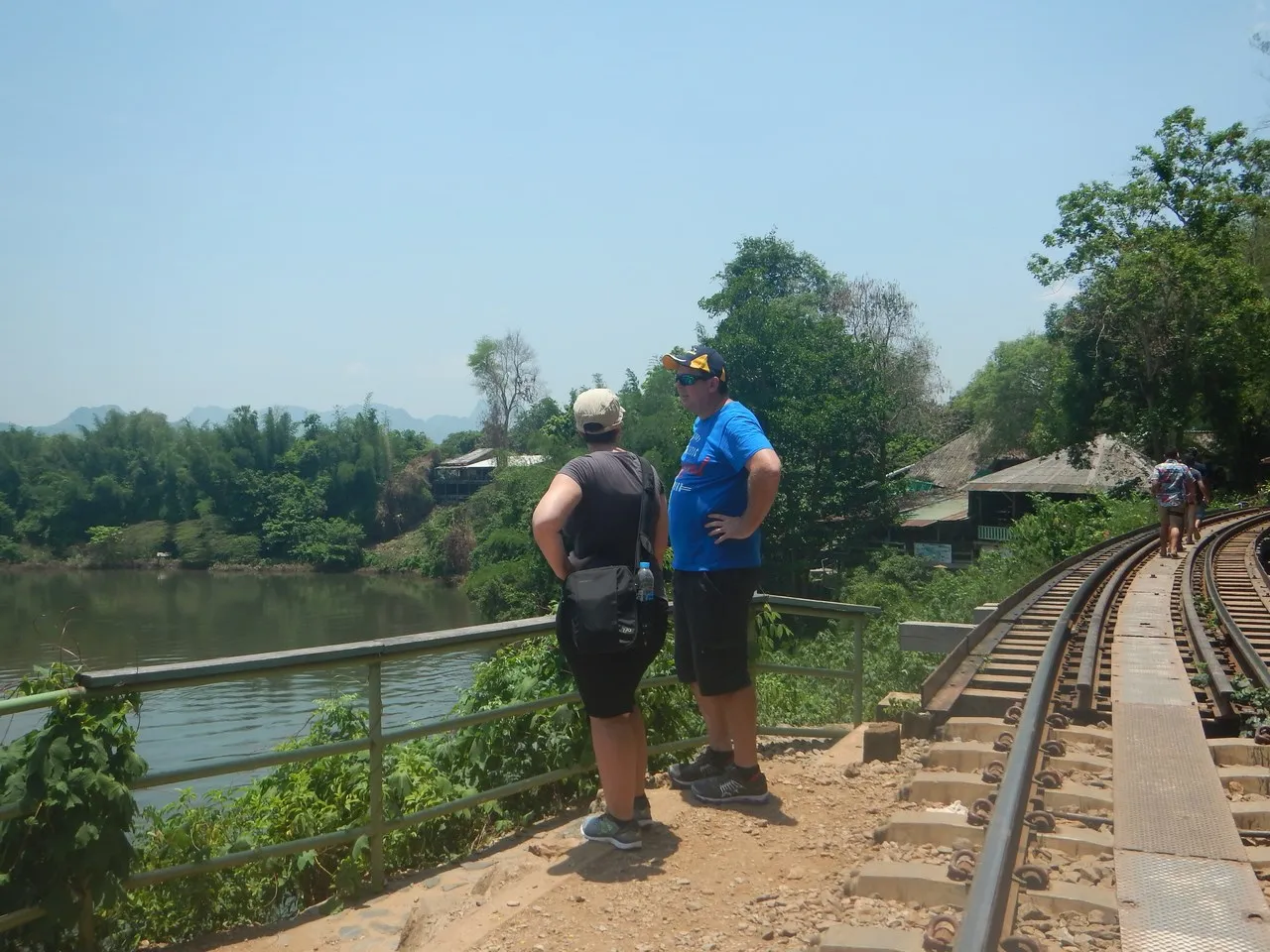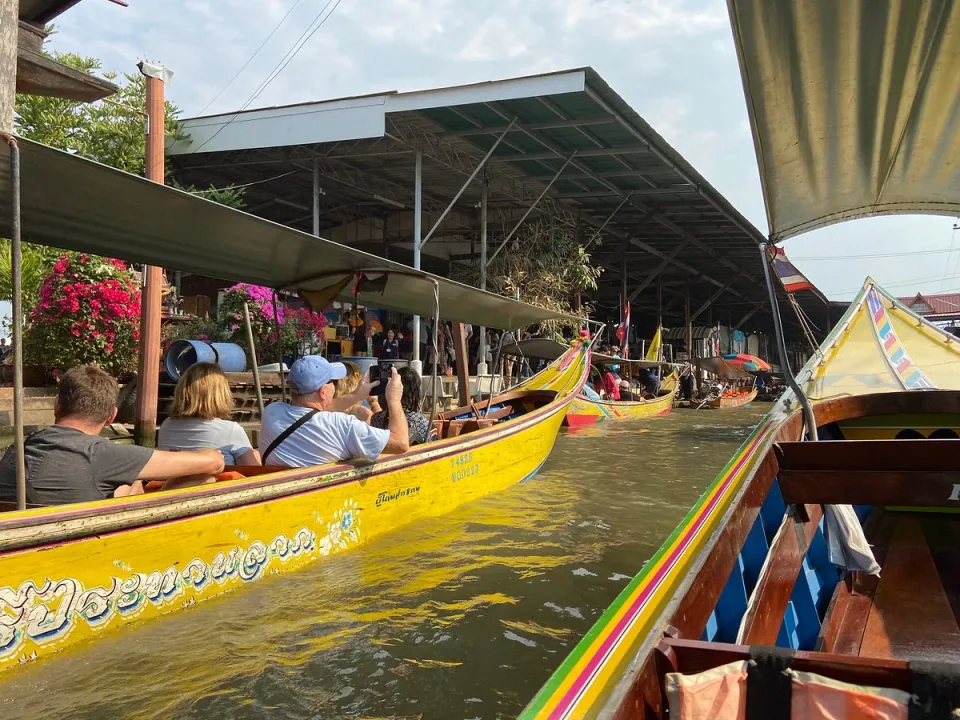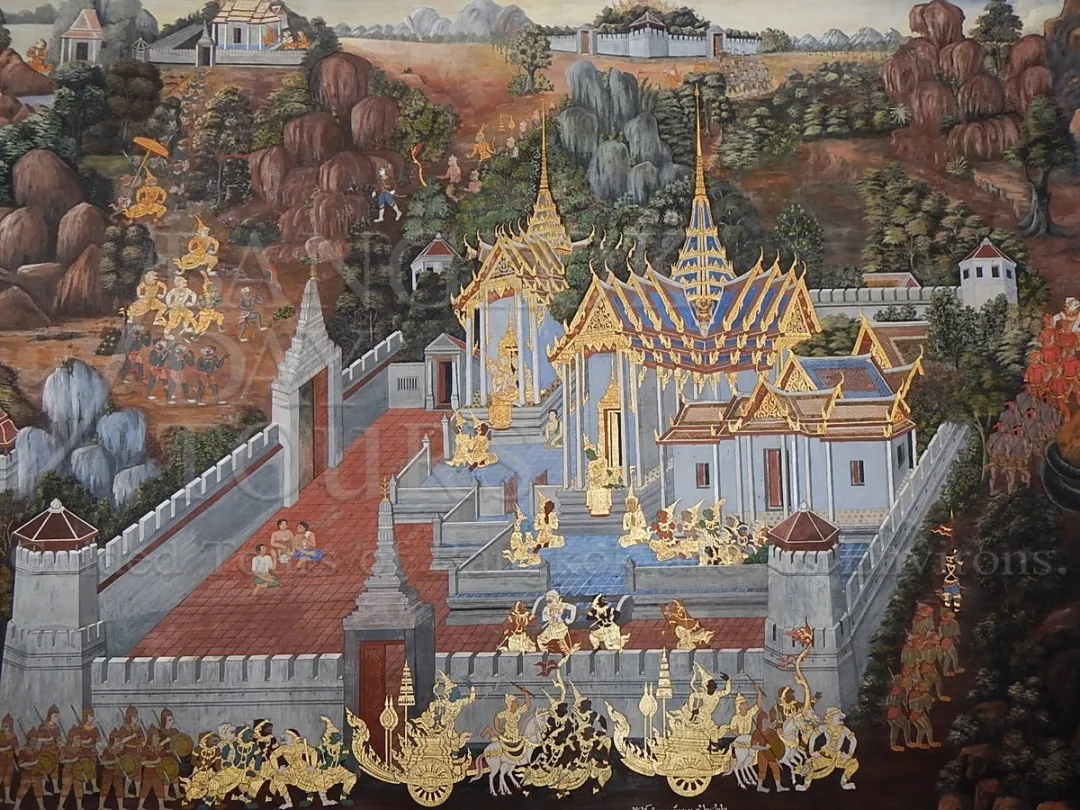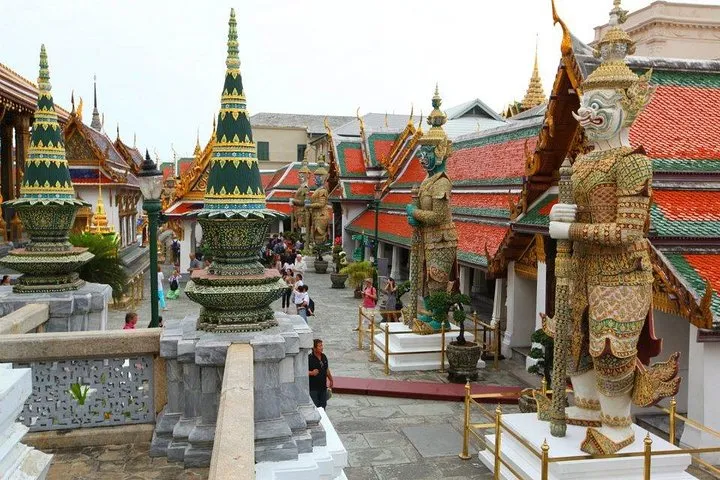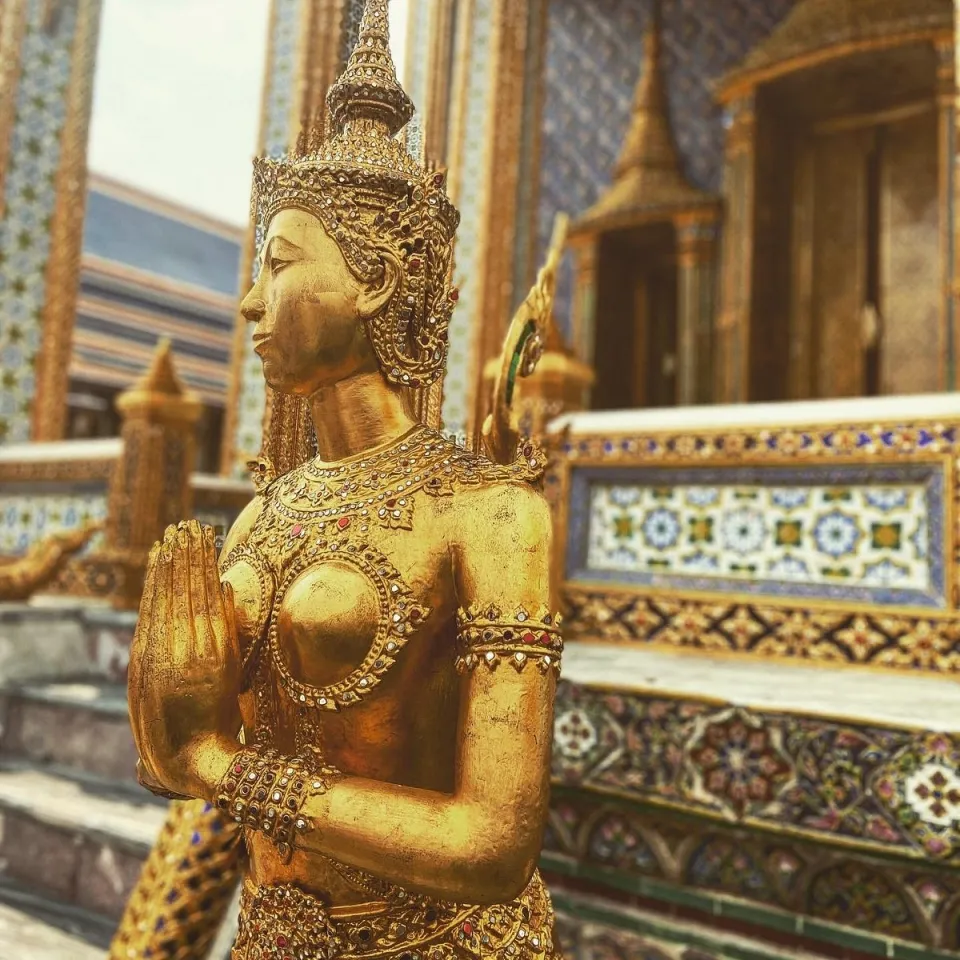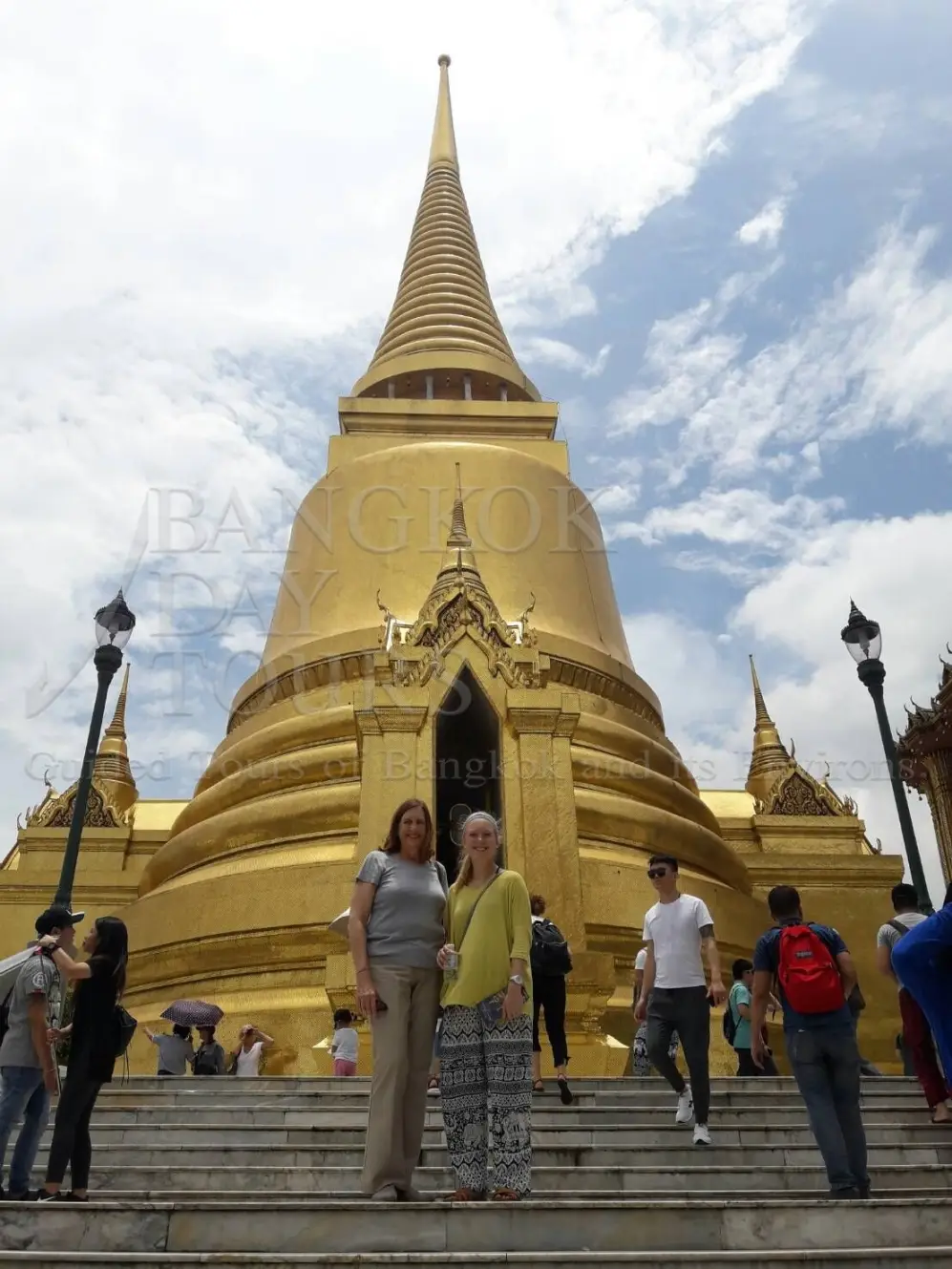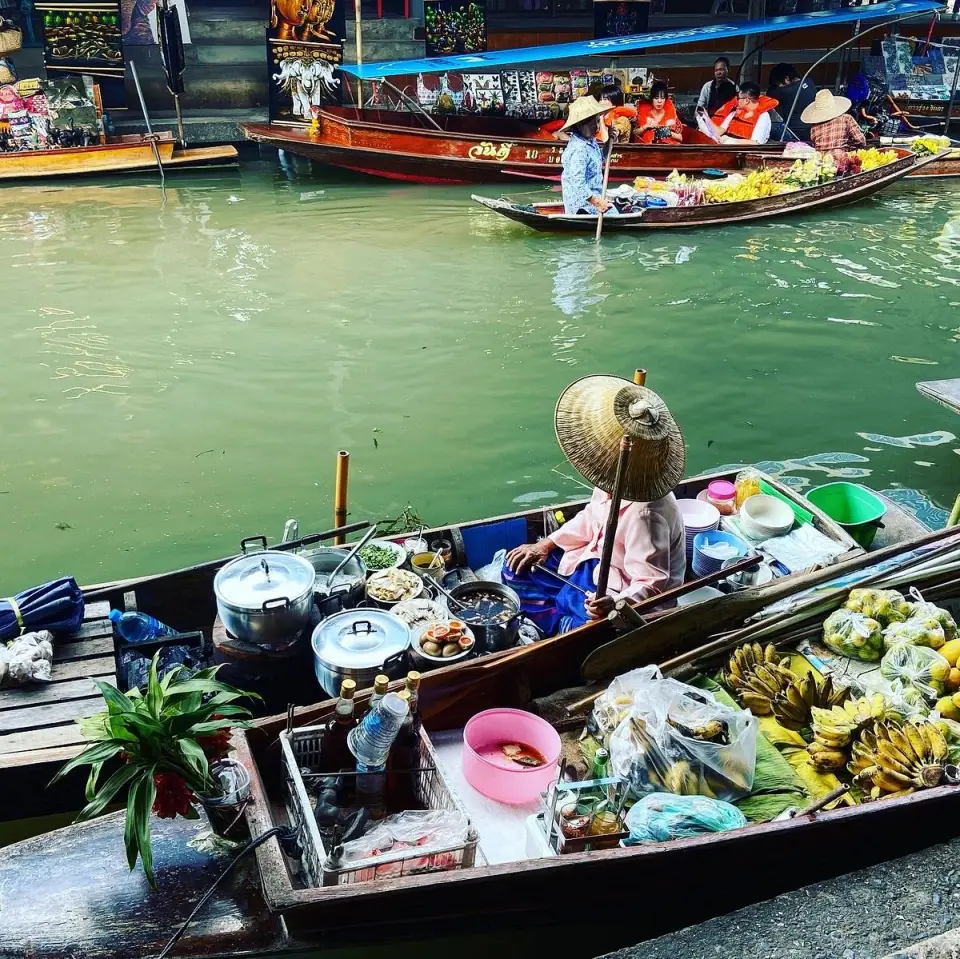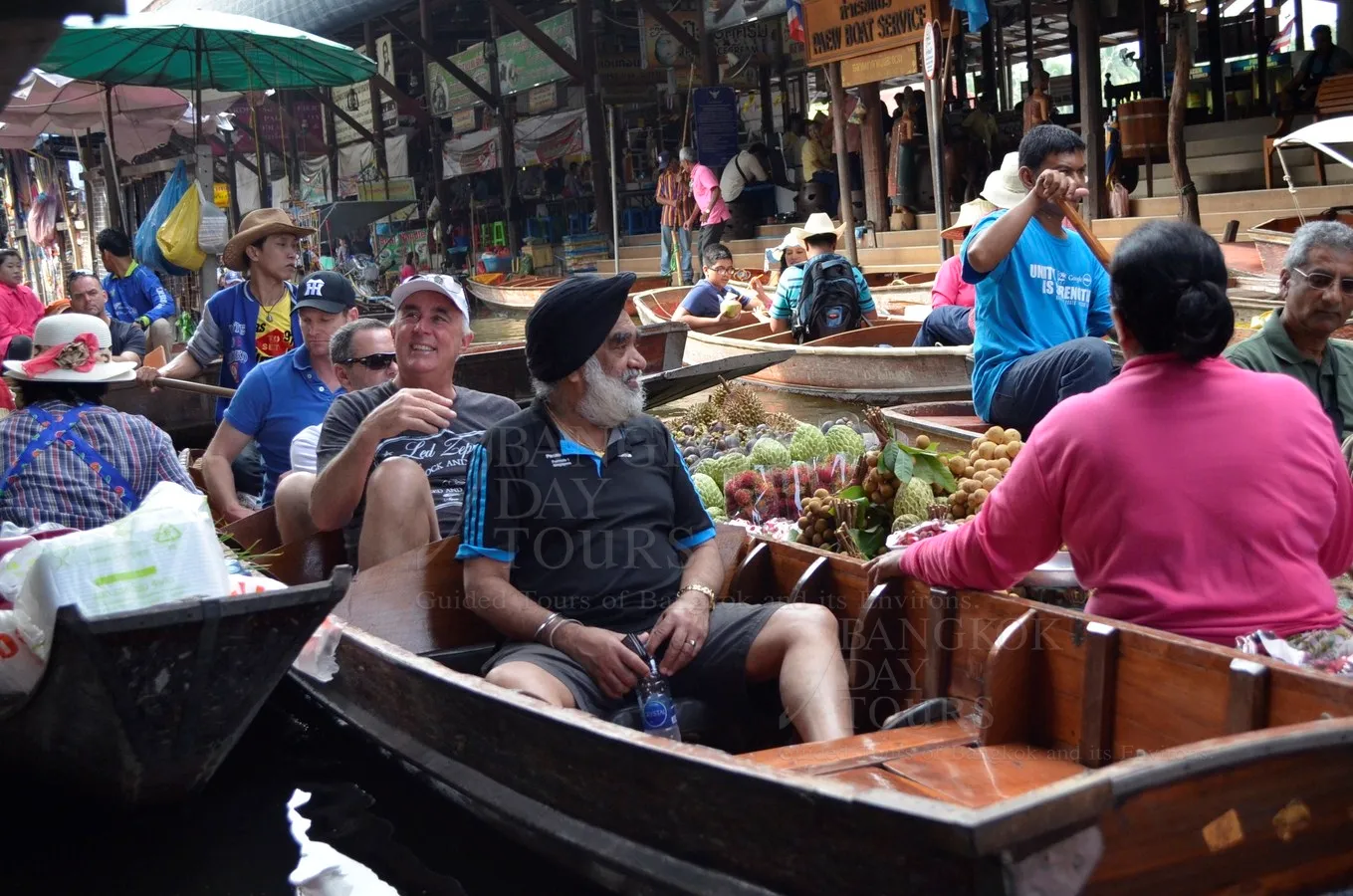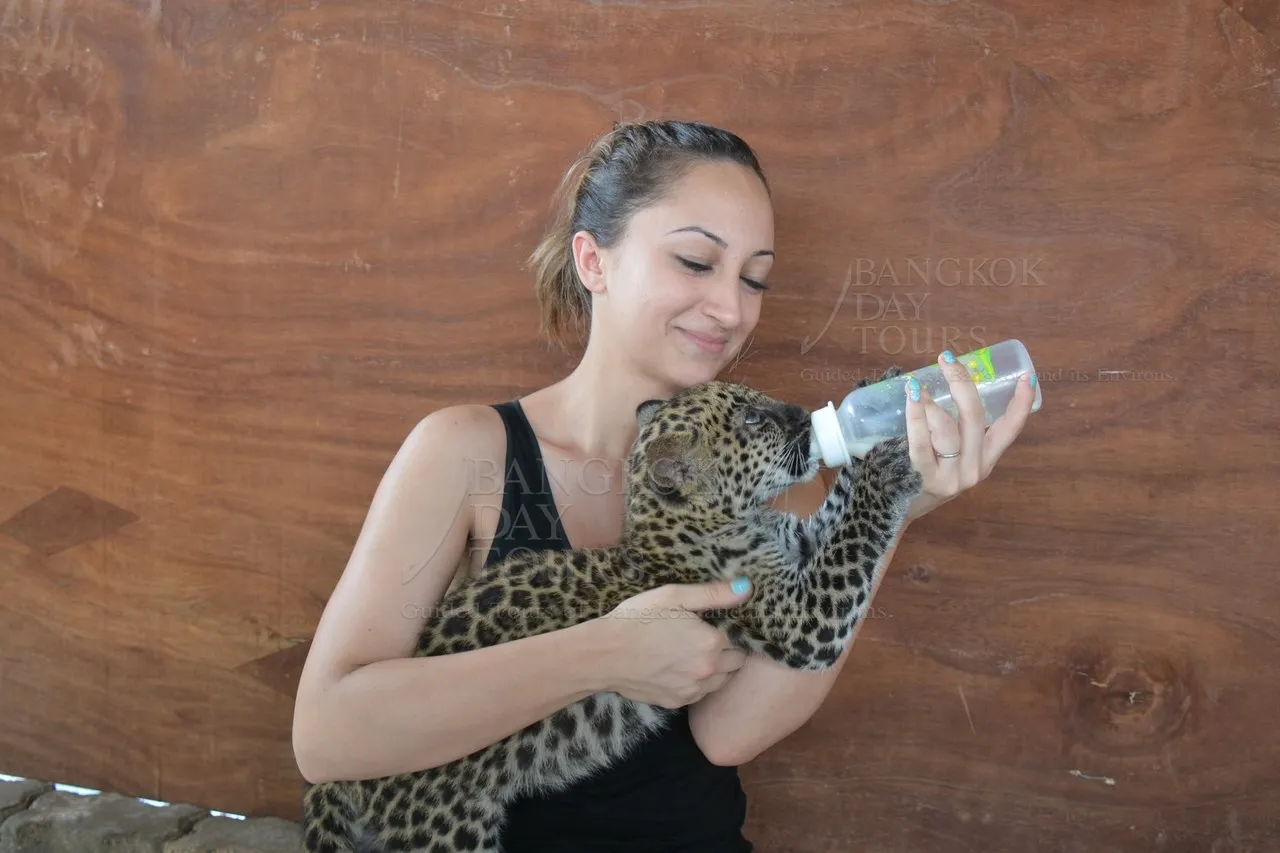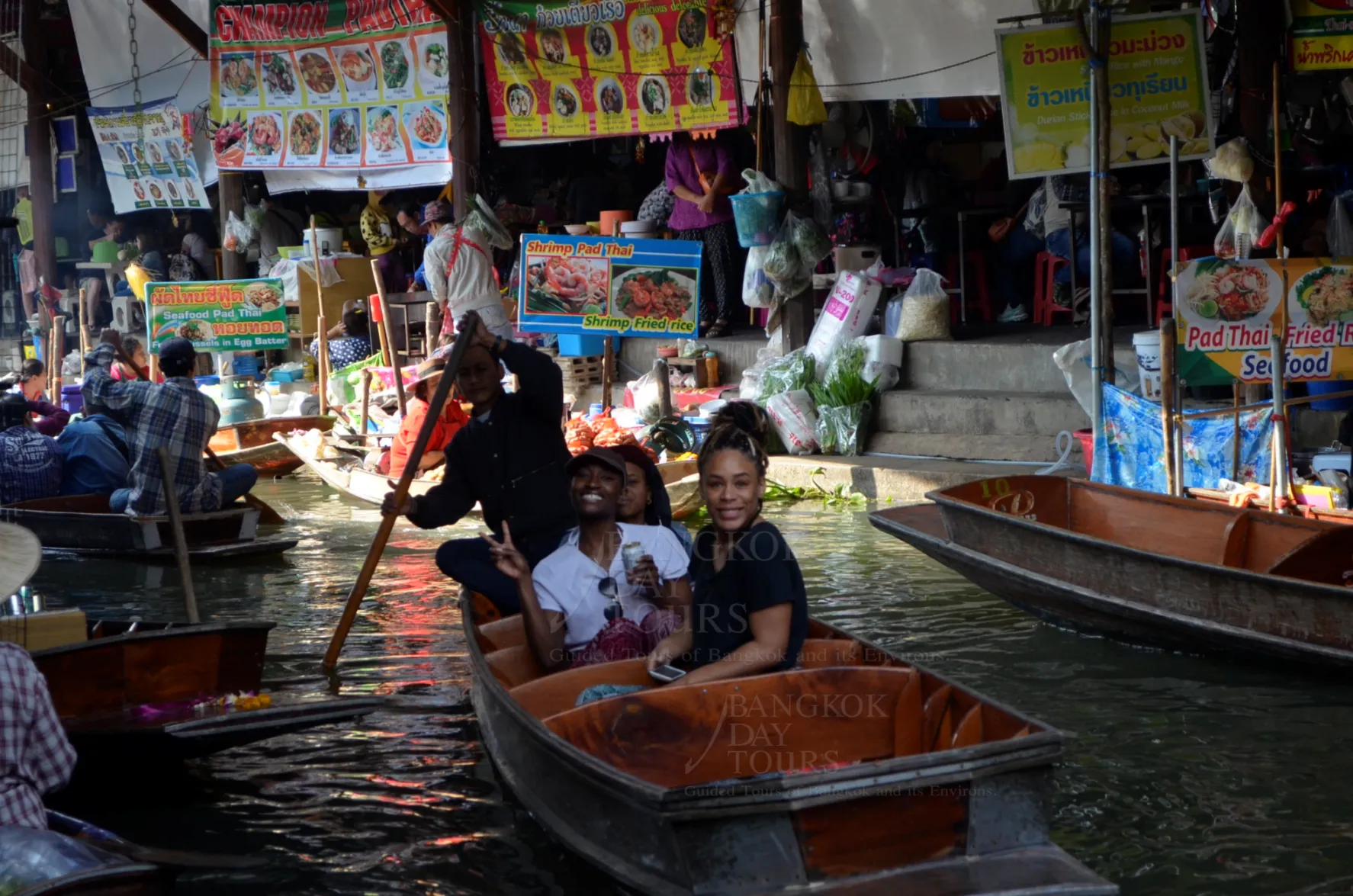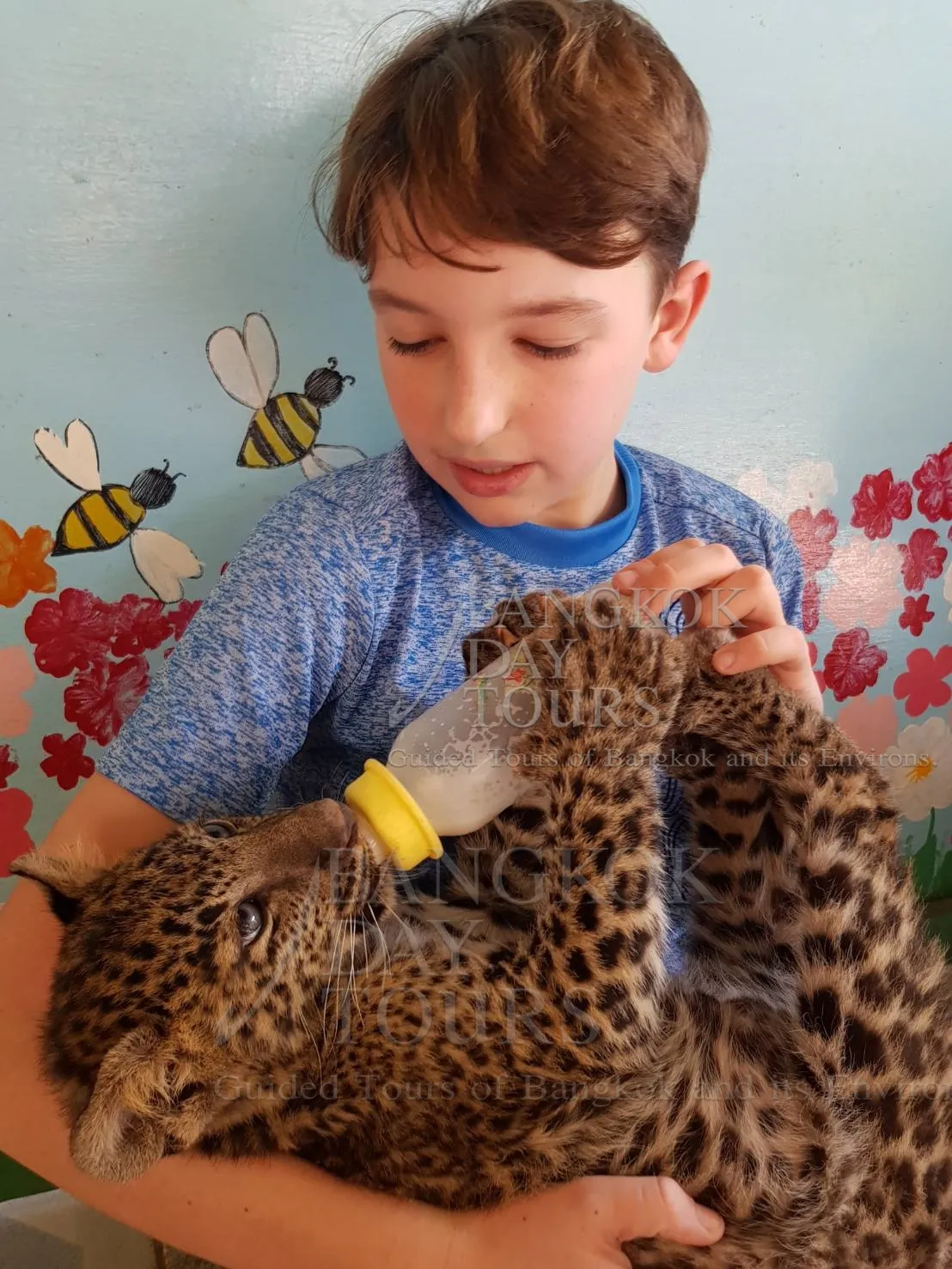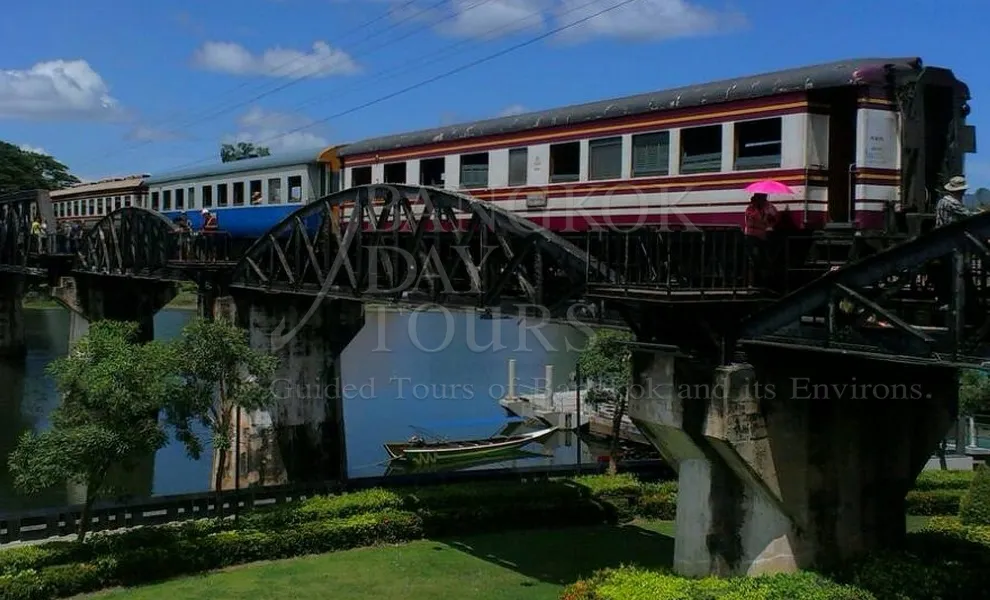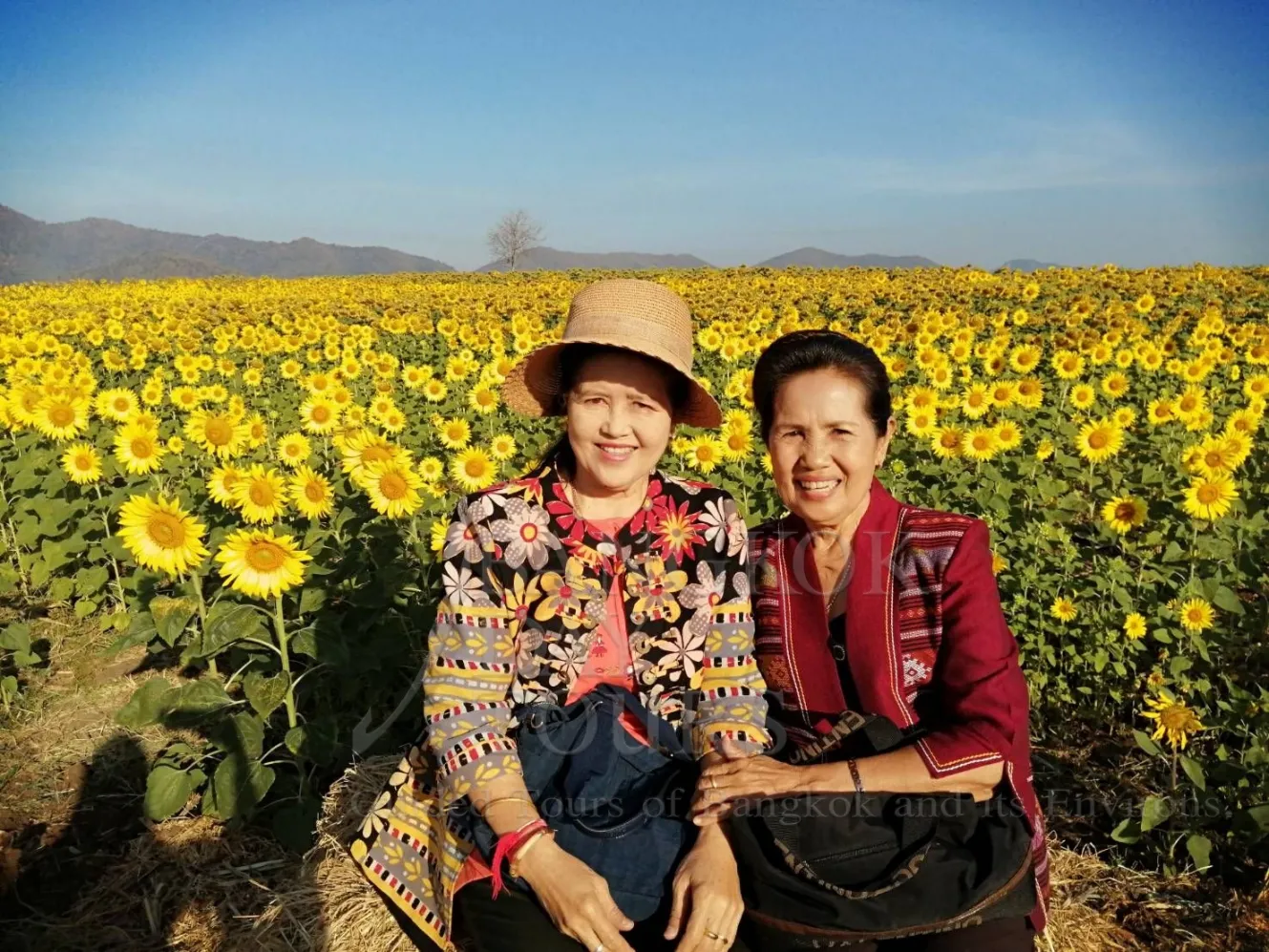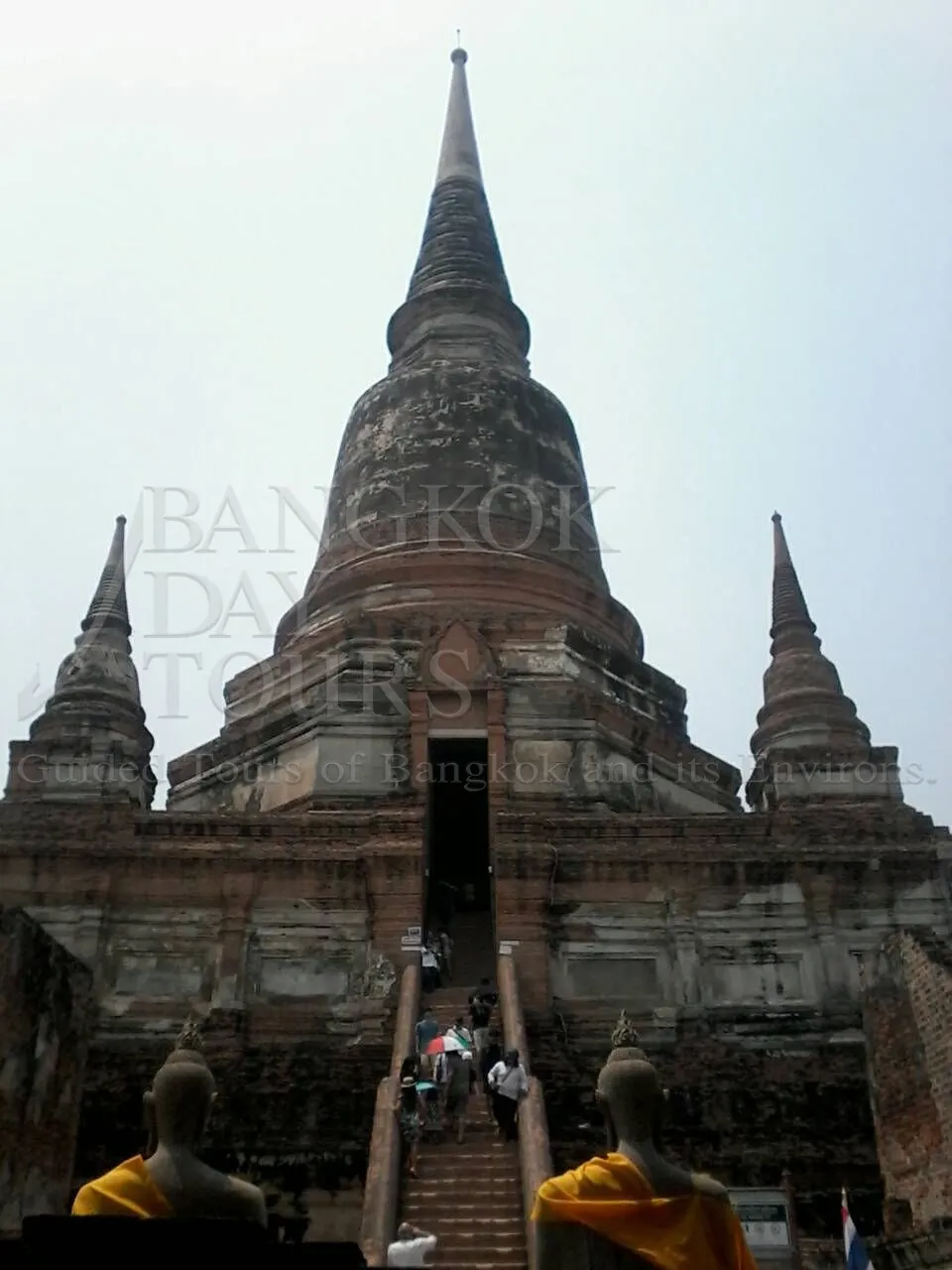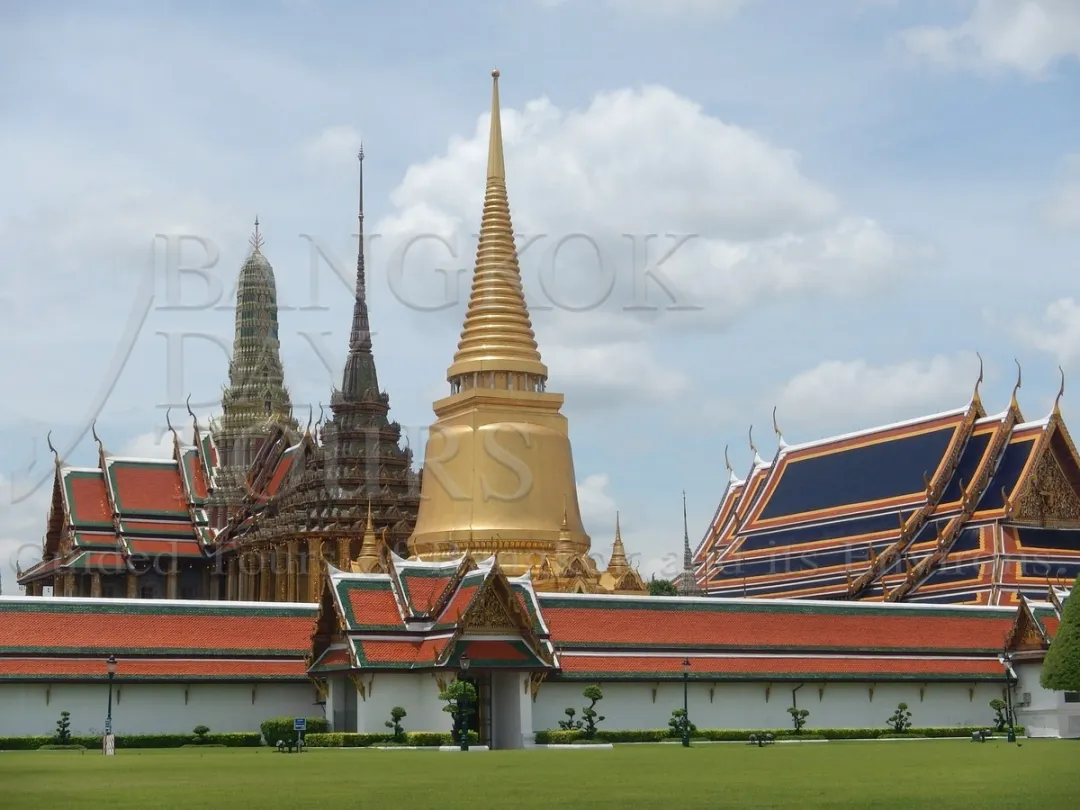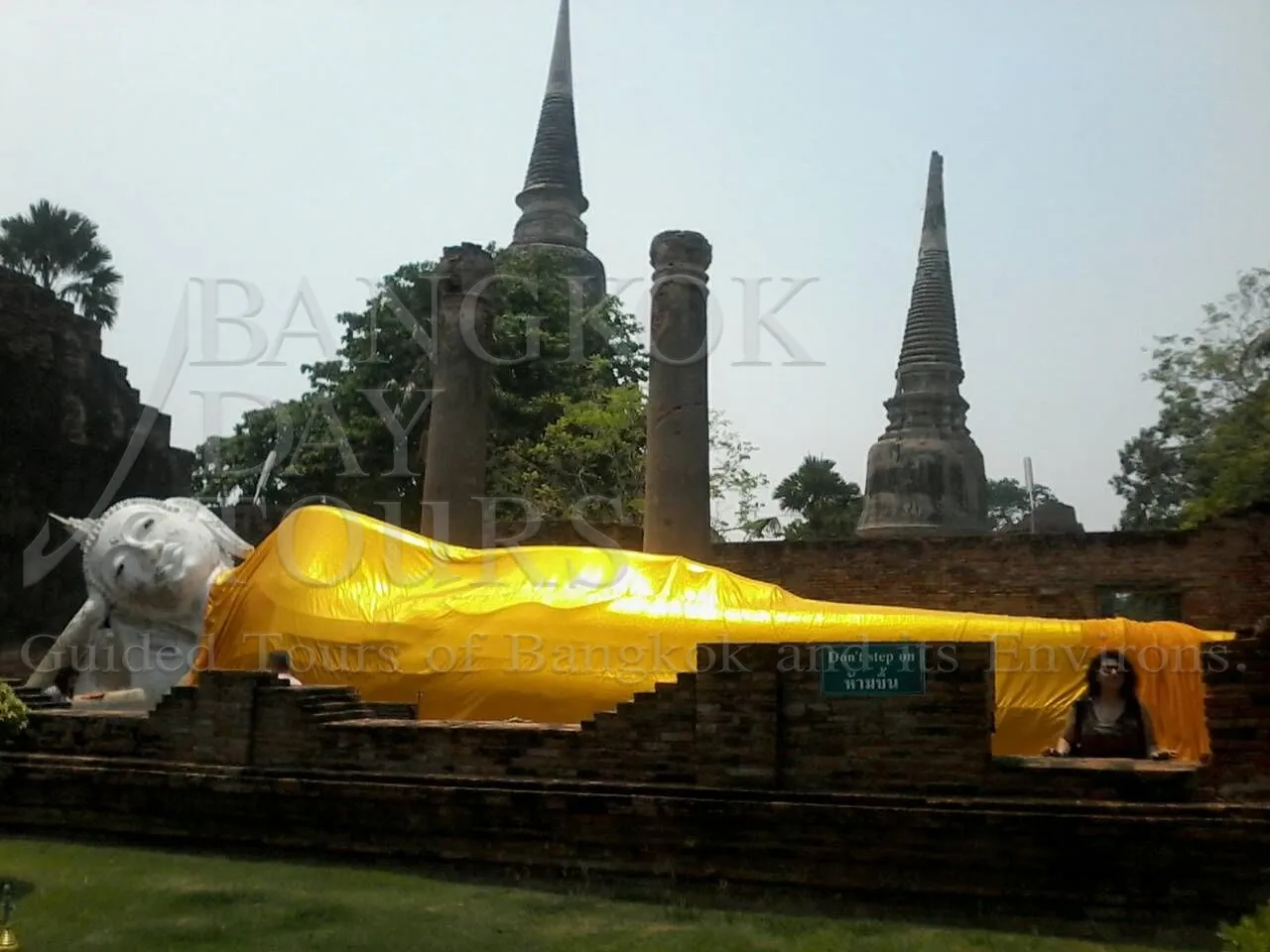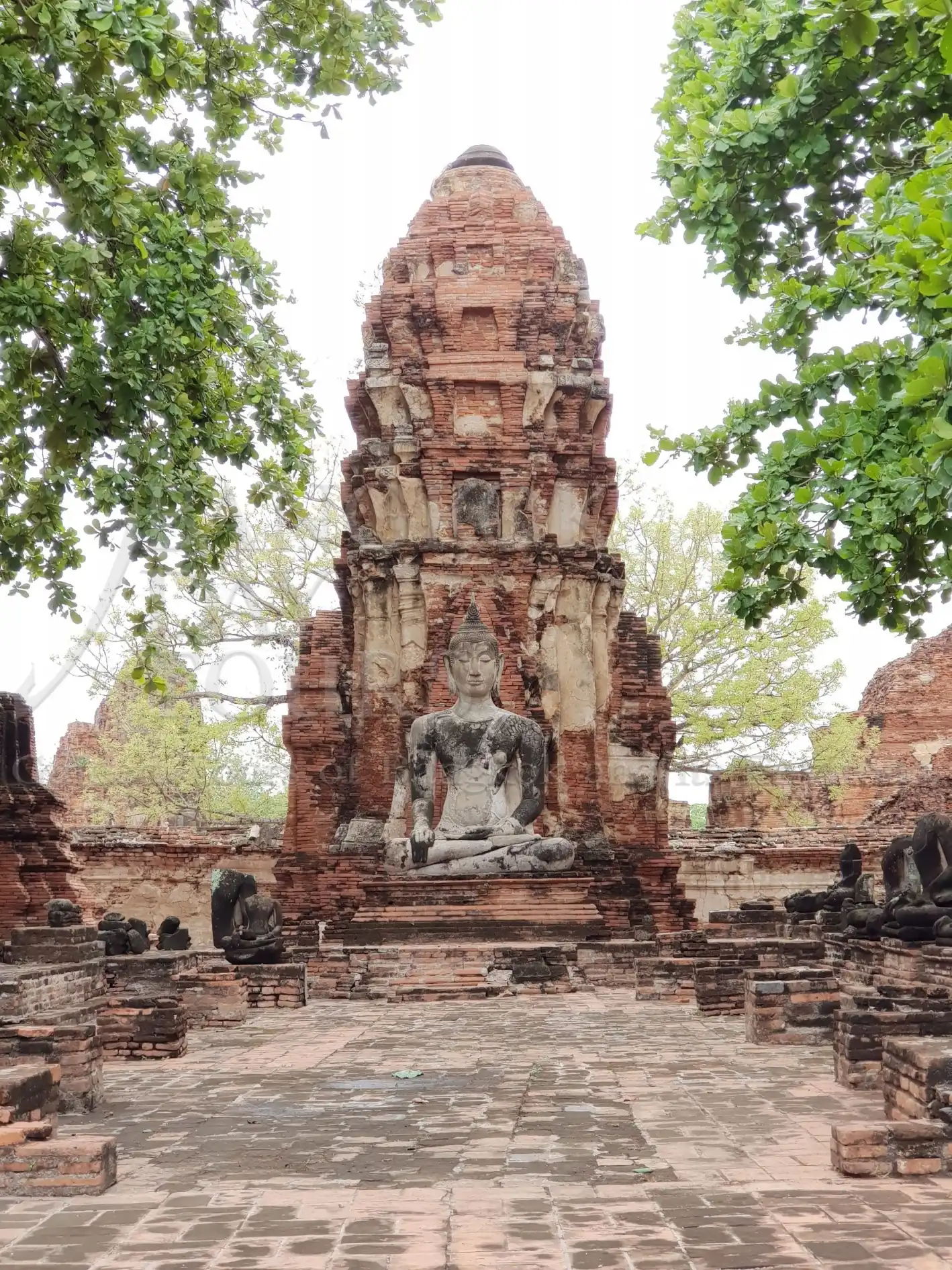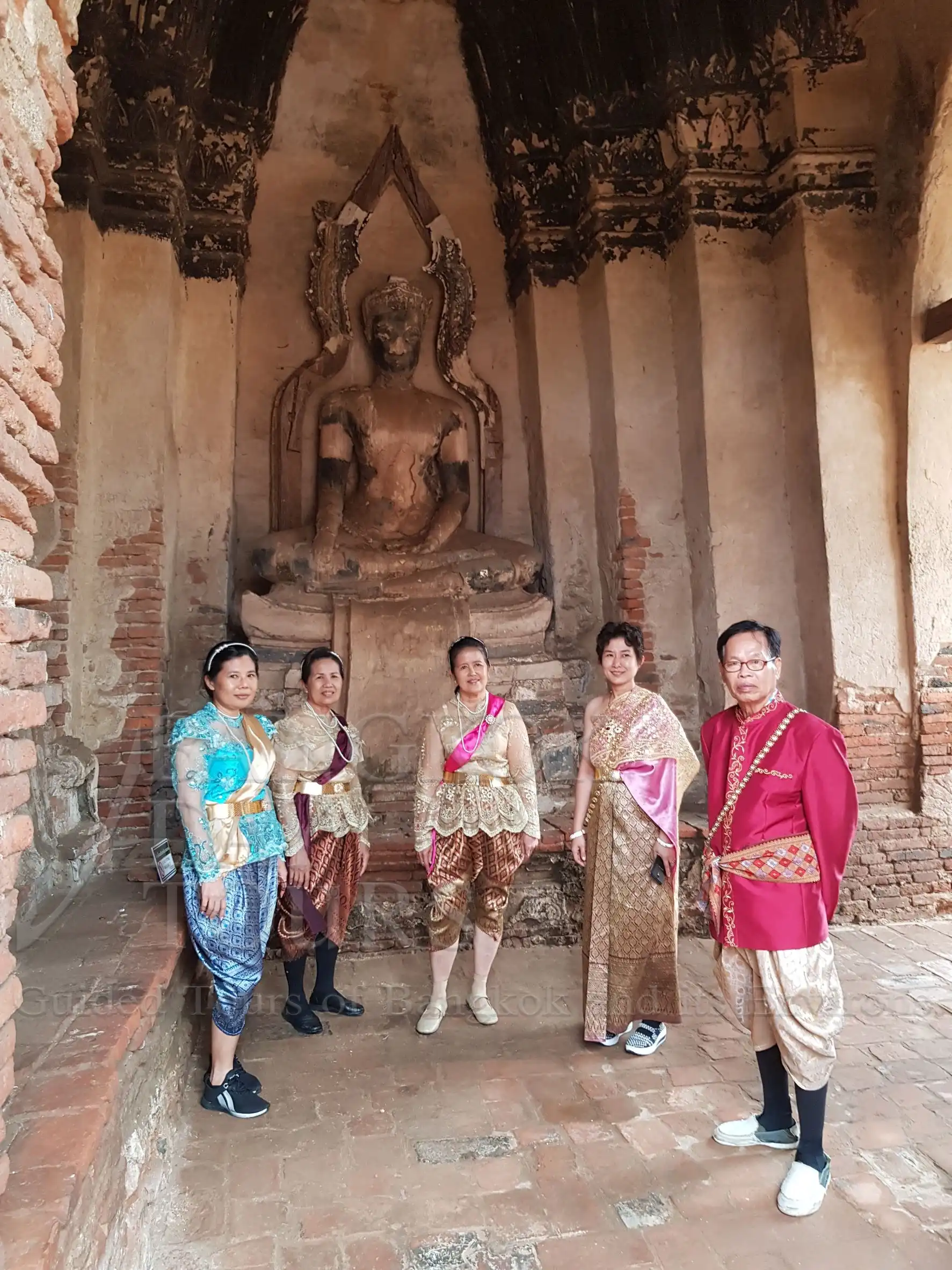
Attractions information
Tiger Cubs @ Wildlife Sanctuary Safari
The tiger (Panthera tigris) is the largest cat species. The species is classified in the genus Panthera with the lion, leopard, jaguar and snow leopard. (we will feed the Tiger, age less than one year)
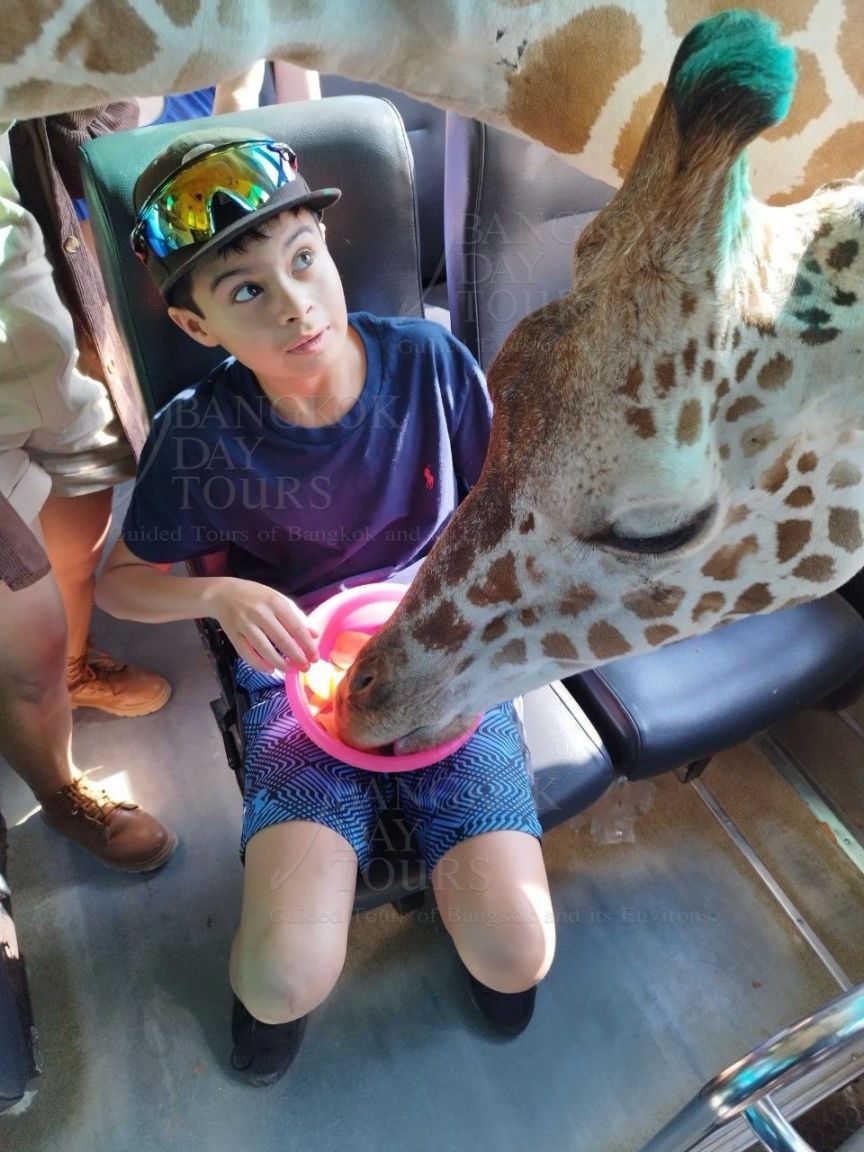
Attractions information
Wildlife Sanctuary Kanchanaburi
Only a short drive into the beautiful countryside of Kanchanaburi province will take you to a man-made habitat where a variety of Asian & African animals roam freely- lions, tigers, giraffes, zebras and bears.
This is the Wildlife Sanctuary.
The landscaping at the Wildlife Sanctuary is beautifully designed and offers great insights into the habits of the animals.
The best way to see everything is to take one of the park buses. Bowls of food to feed the animals - bananas, vegetables etc. The driver will take you slowly through each section of the park, giving you excellent photo opportunities as well as plenty of "up close and personal" time with the animals, most notably the giraffes who will "invade" the bus for some food...great fun!

Attractions information
Ride Elephants
In Thailand, elephants are the most revered of all animals and still play an active part within Thai society and culture.
In the past they have been used at the forefront of battles and in more recent times to assist in the logging trade. Now, visitors have the opportunity to ride them.
Despite their vast size, elephants are remarkably agile and are particularly adept at negotiating the narrow tracks in the forest. It's a little nerve wracking, especially when they are going downhill and so make sure you hold on tight.
They often pause along the way, bending far out to pluck some tasty morsel, oblivious to you perched high on their back.
Tiger Exclusive program + Ride Elephant (Code:1510)
Pick a day and people
THB 12,500.00
THB 18,000.00
THB 24,800.00
THB 33,000.00
THB 41,300.00
THB 49,500.00
THB 57,400.00
THB 64,000.00
THB 72,000.00
THB 82,500.00
THB 90,750.00
THB 99,000.00
This tour is not designed for cruise ship passengers. Exclusive cruise ship tours are available from Klong Toey Port and Laem Chabang Port.
The Tiger Exclusive Program with a three difference species 'Leopard, Lion or Tiger cubs' So you'll be able to feed and play with them. This is a very rewarding experience plus elephant ride and it makes you glad they have seat belts!
Do you want your tailor-made tour?
A tailor-made tour is the best kind of independent travel itinerary, designed and arranged just for you and your needs.
All events and activities are part of your very personal, privately guided tour.
Just ask us and we will be happy to make your tour an unforgettable experience. We have been doing this for 25 years and the quality of tailor made tours has never changed.
Why is a private tour a better choice?
With a private tour, you have the freedom to choose what you want to do and when you want to do it. There is much more room for flexibility and changes to your itinerary at every step of the way because you don't have to consider the needs of other travelers. The flexibility and freedom to make the most of your time is the reason why so many people choose to take a private tour rather than a group tour.Private Tours vs Join Tours:
Bangkok Day Tours does not run join tours. All our tours are private tours, meaning that the vehicle is for the exclusive use of your group throughout the duration of your tour. This allows you to set your own pace and to move along when you have seen enough. No waiting for the stragglers! The only exception to the ANZAC Day Tours which are run on a join basis in April each year.Tour Programme
06:30 - Pick up from your Hotel
Please wait in the lobby of your hotel promptly at 6:00 am.
08:00 - Bridge over the River Kwai
We'll stop at the Bridge over the River Kwai so you can walk across and take some photos. Please be careful here because the bridge has no sides or safety rails.
09:00 - Tiger Cubs, Wildlife Sanctuary Safari
Tiger Cubs with a two difference species 'Leopard, Lion or Tiger cubs' seasonal. Depend on the time when we'll visit! So you'll be able to feed them and play with them, this is a very rewarding experience.Read More >
10:00 - Wildlife Sanctuary Safari
The giraffes here will make your day. Their long necks just keep coming and coming to find the food they know is in the bus.Read More >
11:30 - Lunch at Thai Restaurant
We'll drive to a local Thai restaurant for lunch.
13:00 - Elephant Ride
Elephants are much loved in Thailand and riding one is a unique experience. you will have the chance to ride on the elephant's neck.Read More >
13:30 - Depart for Bangkok
All good things must come to an end, so it's time to head back to the city.
16:30 - Arrive Back at Hotel
You can expect to be back at your hotel in Bangkok around 4:30 pm depending on the traffic.
Important Information
Tiger Cubs will be two of a three difference species ‘Leopard, Lion or Tiger cubs’ seasonal. Depend on the time when we’ll visit!




